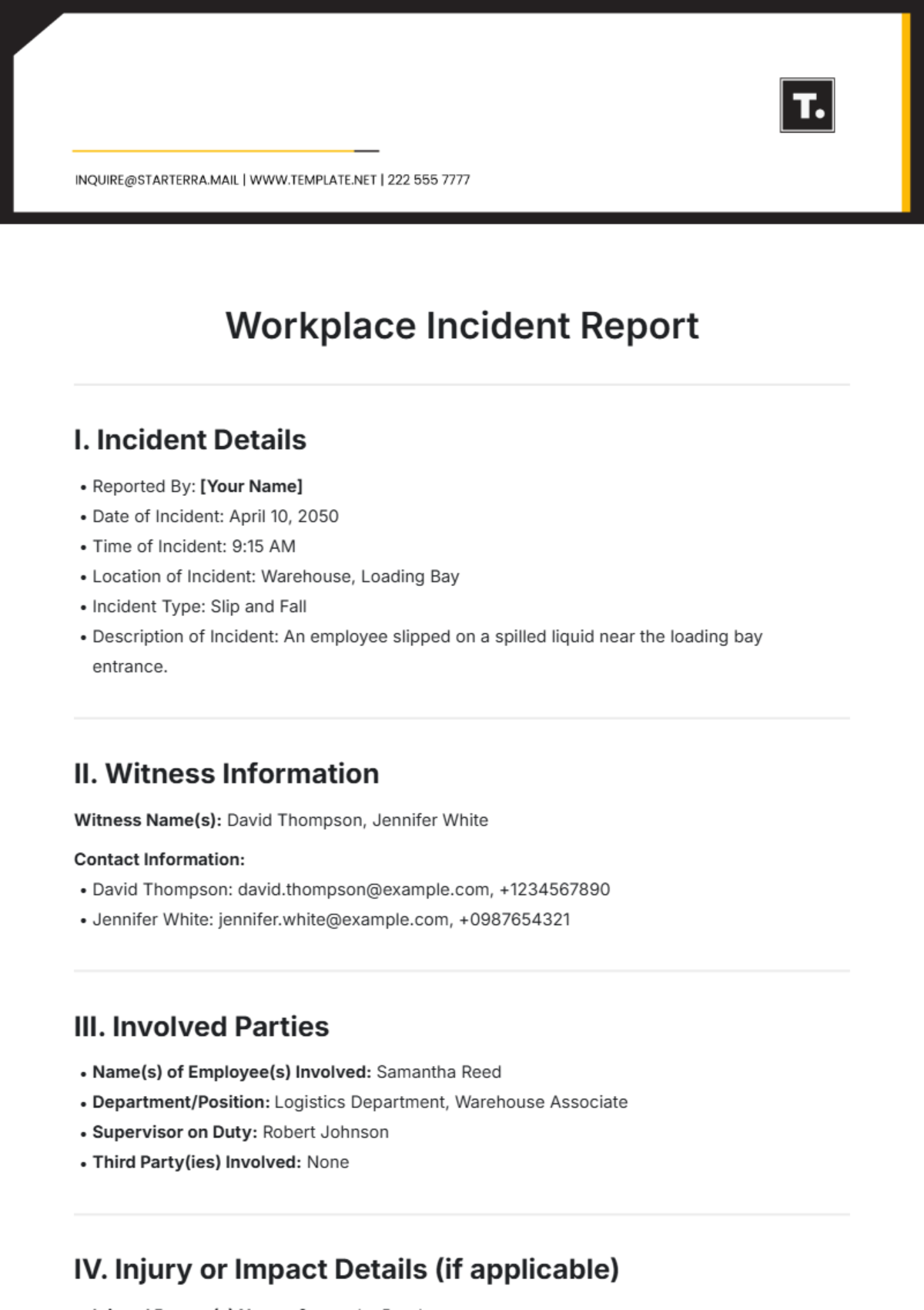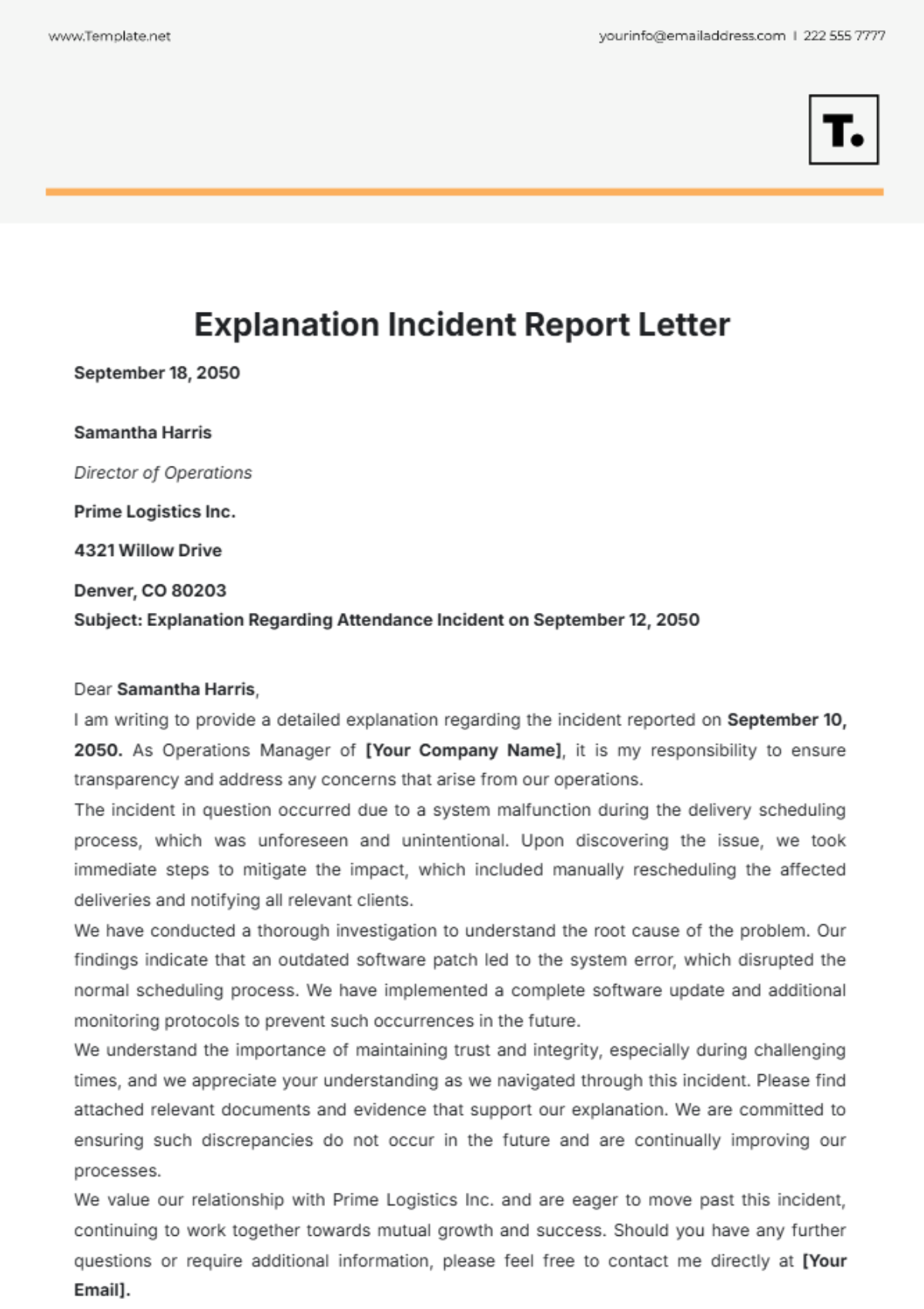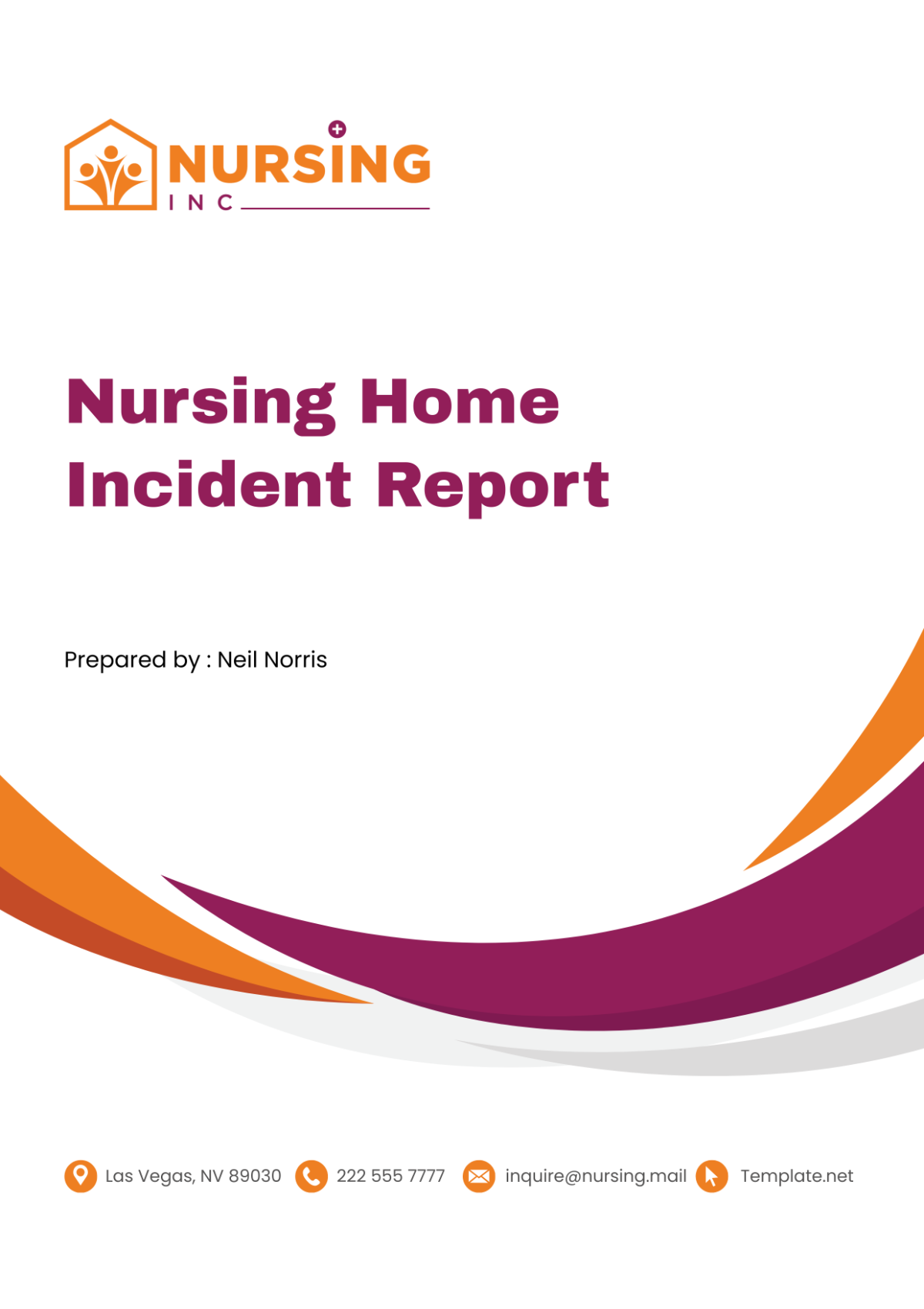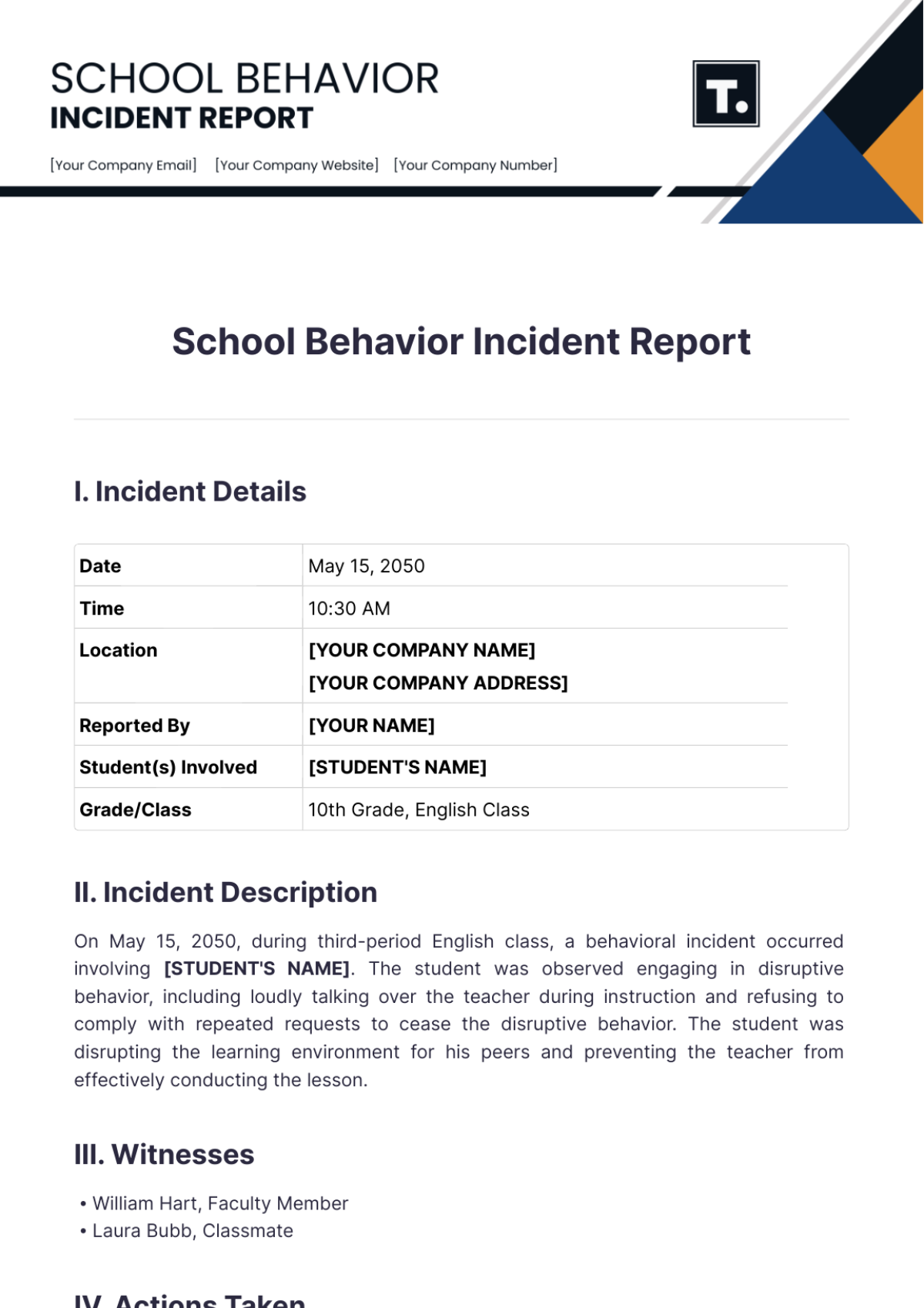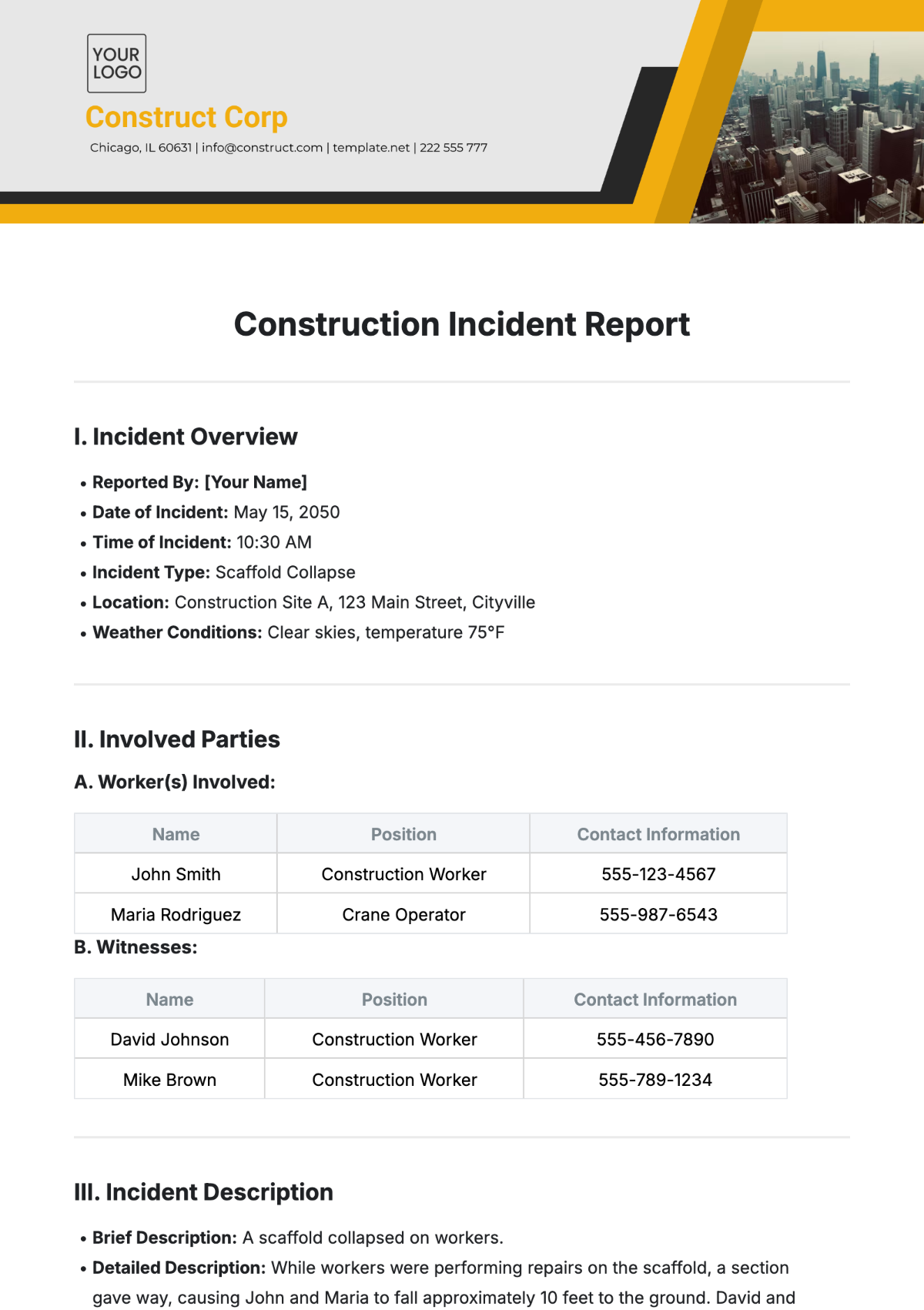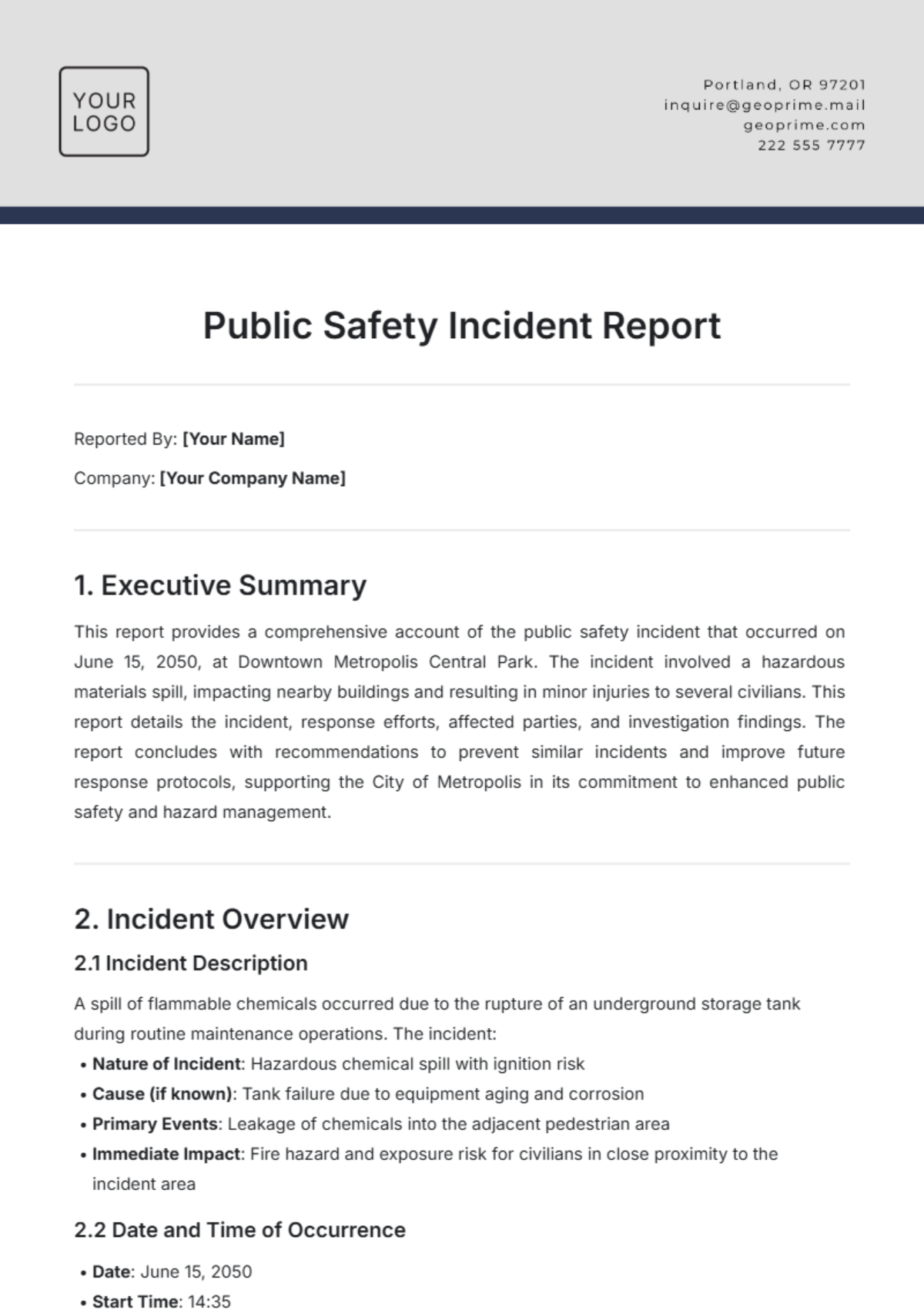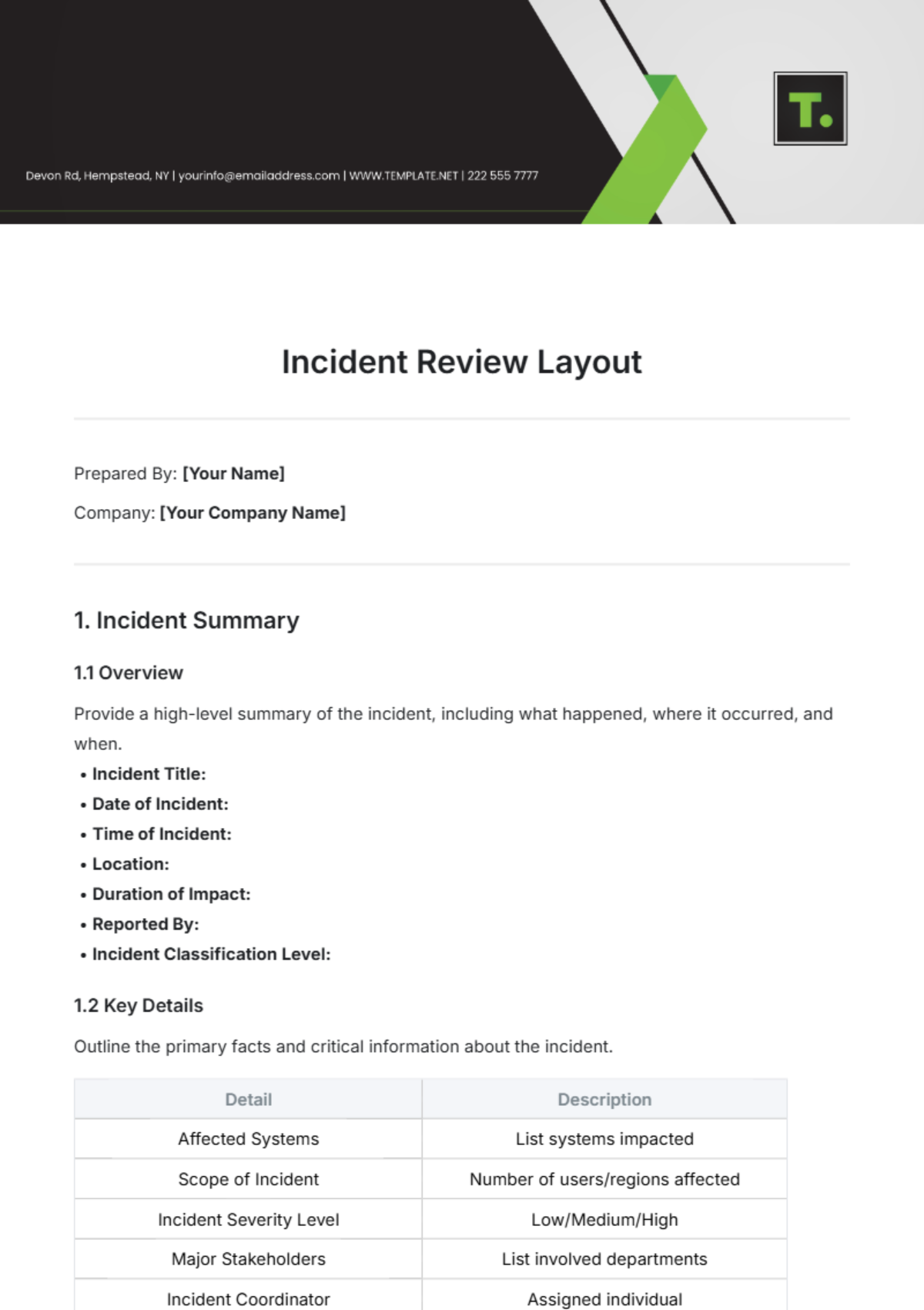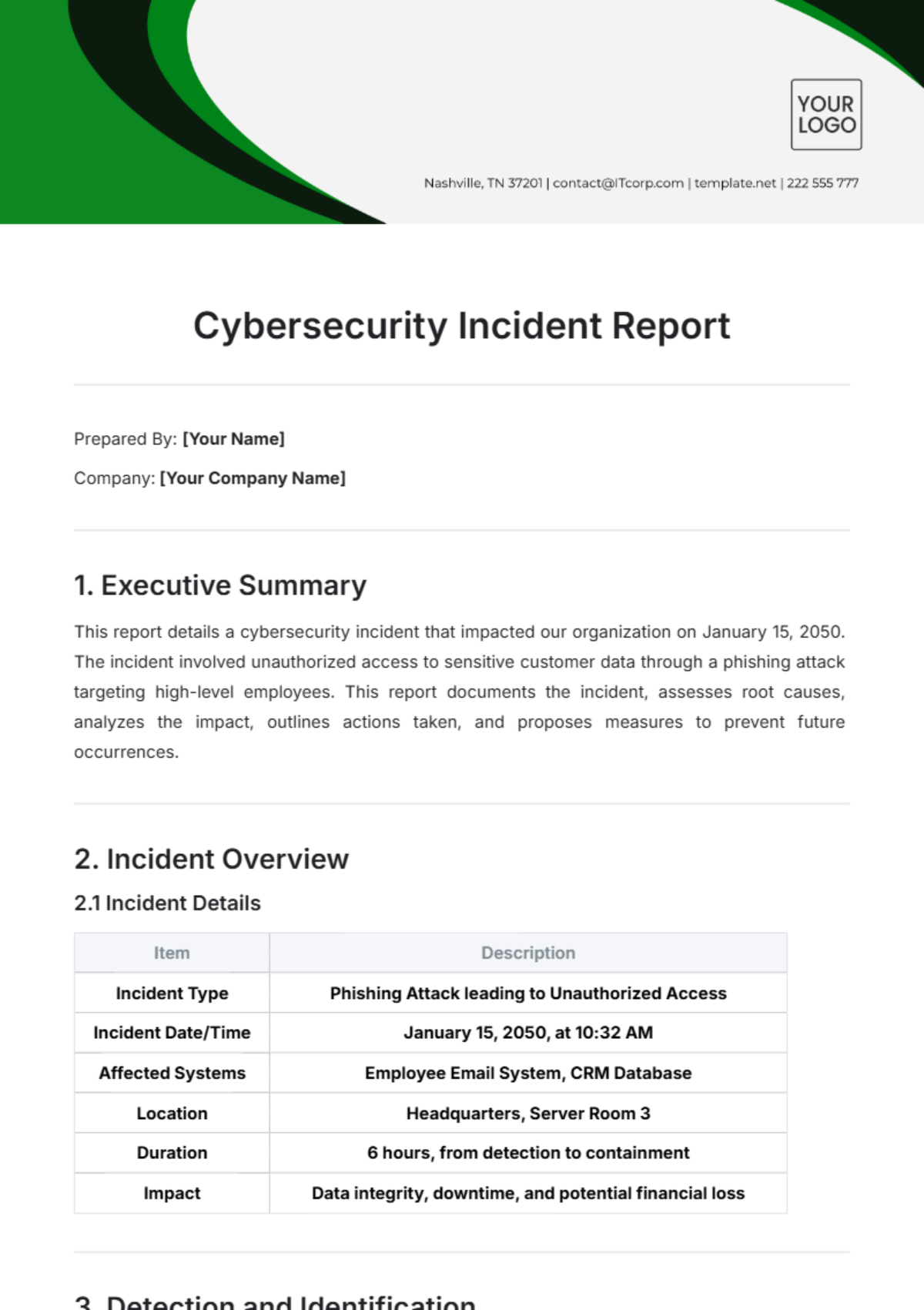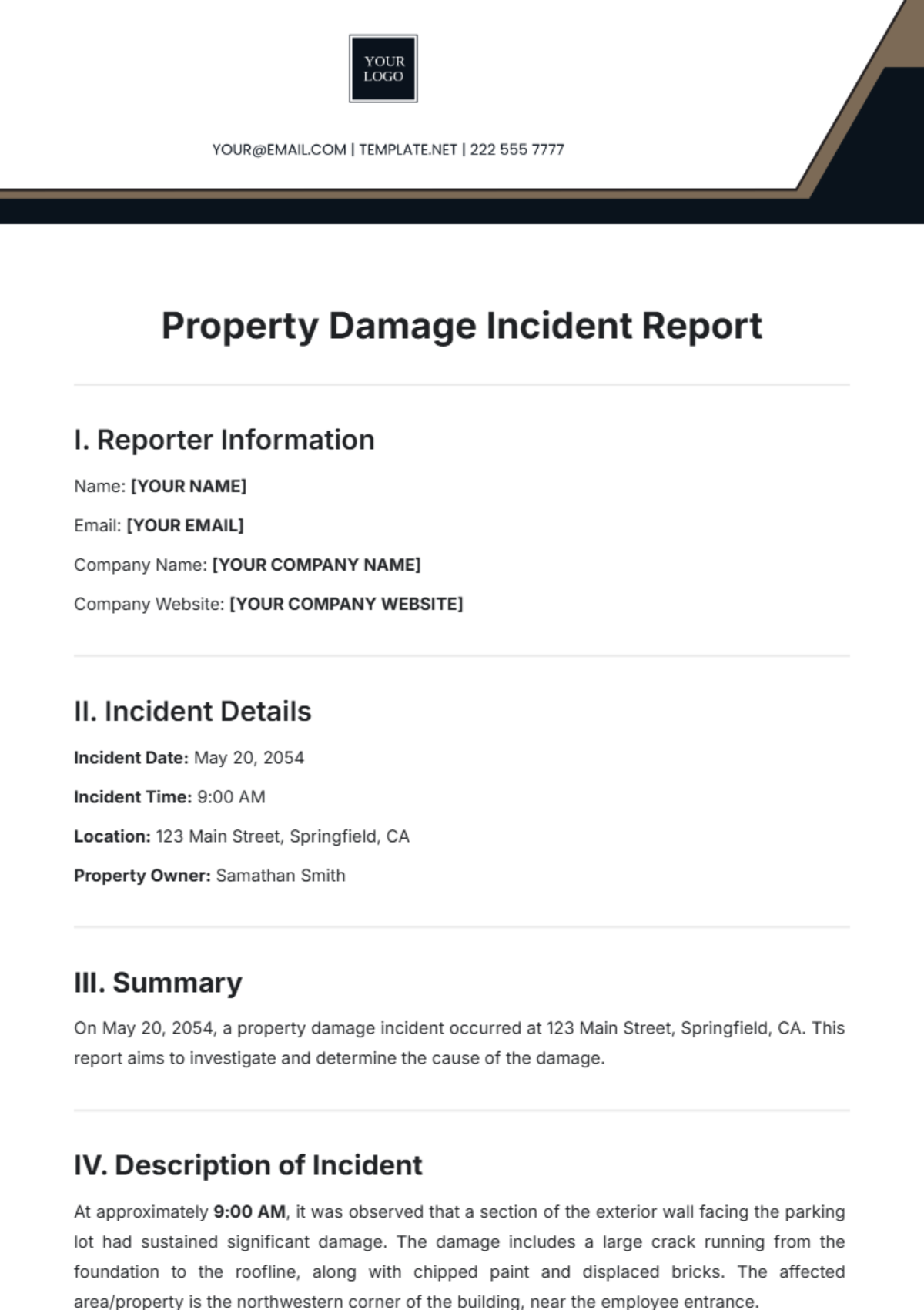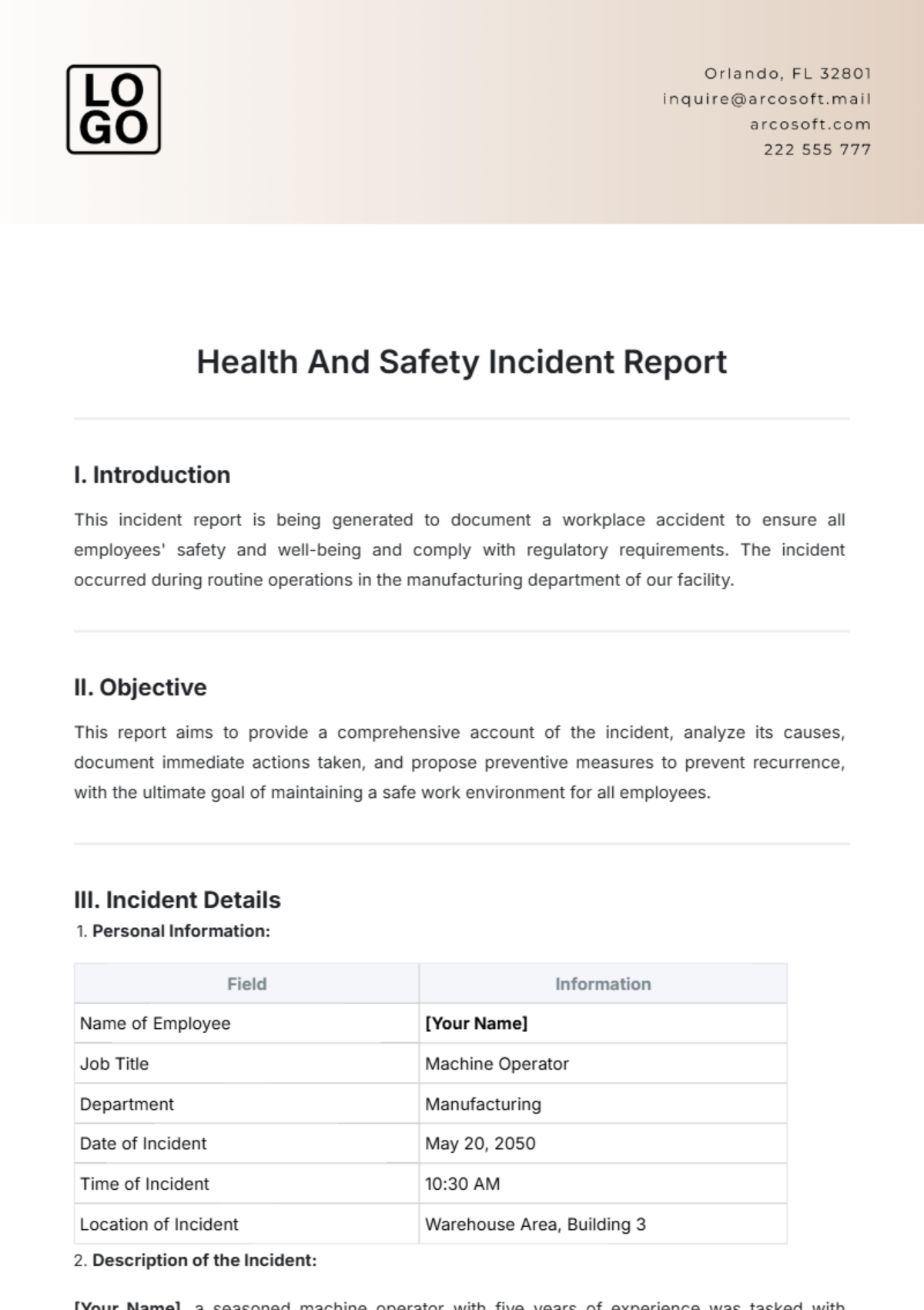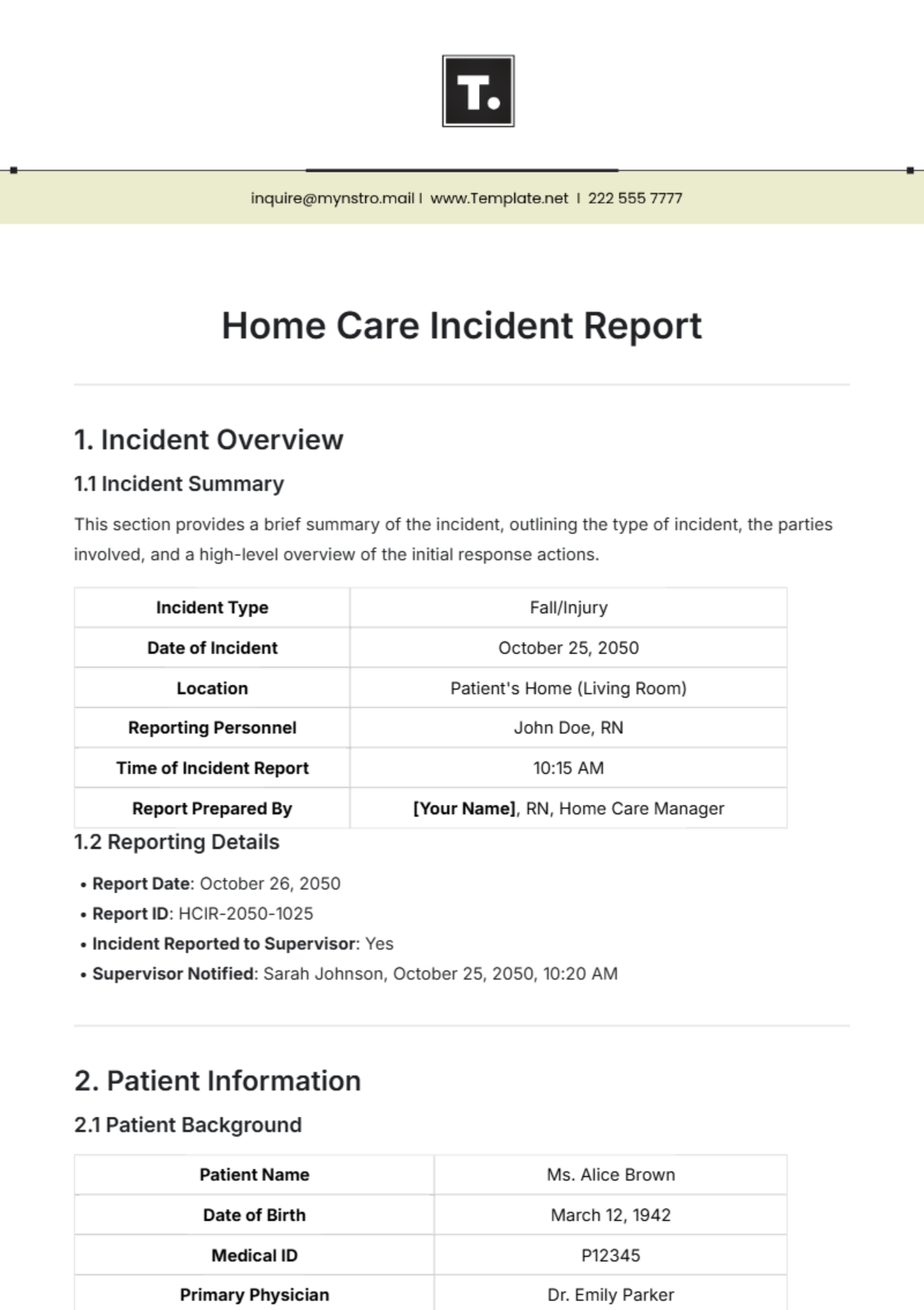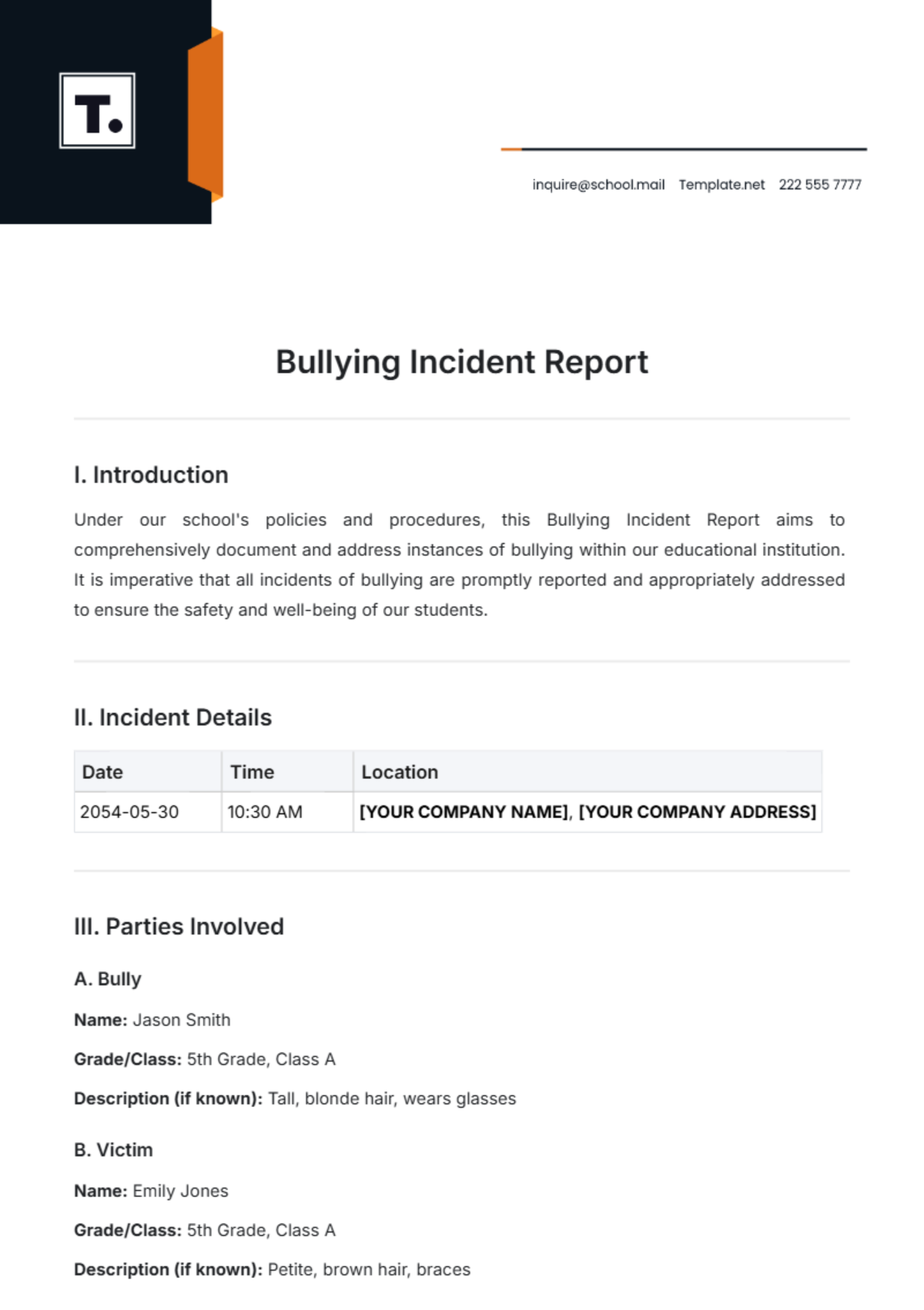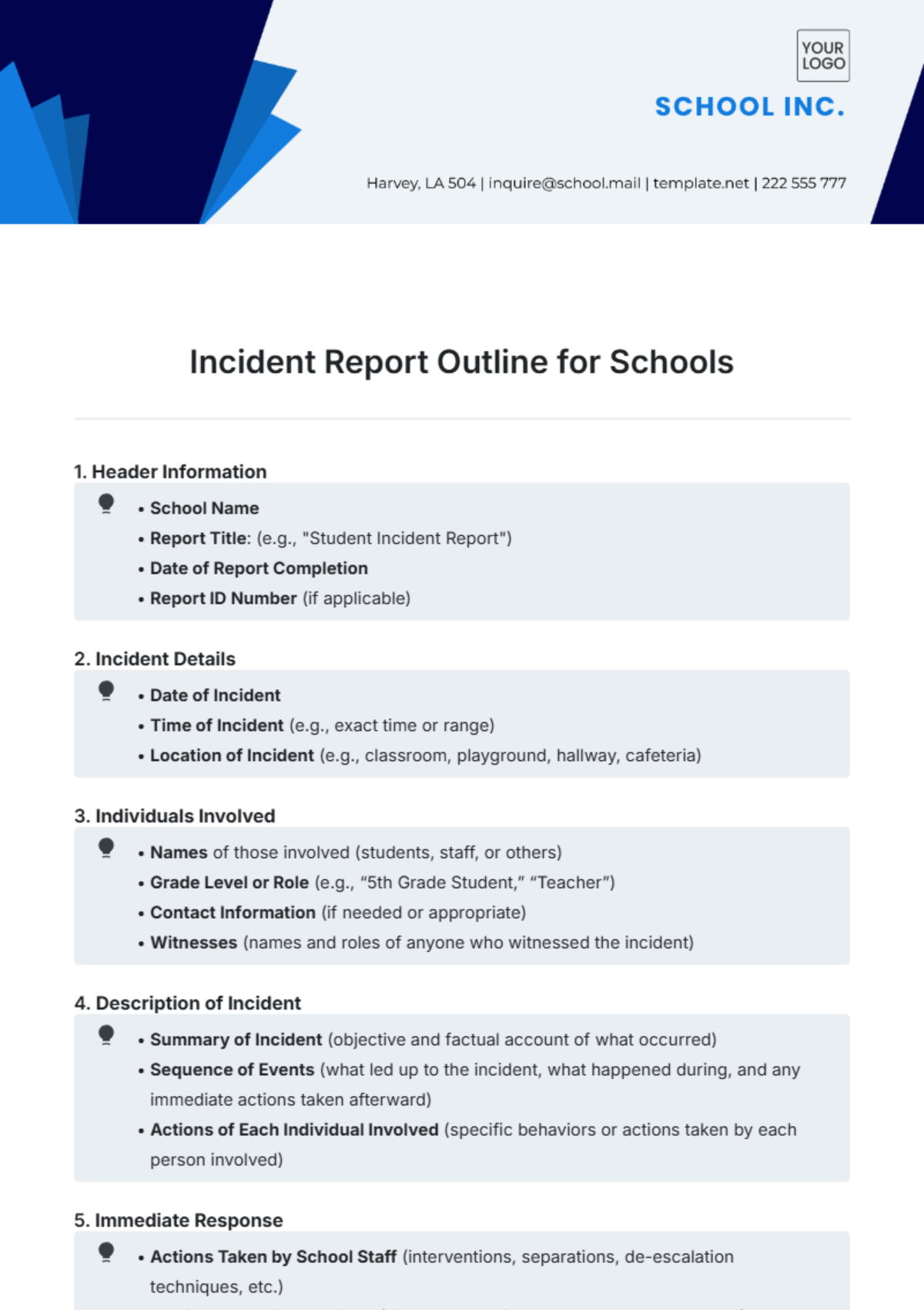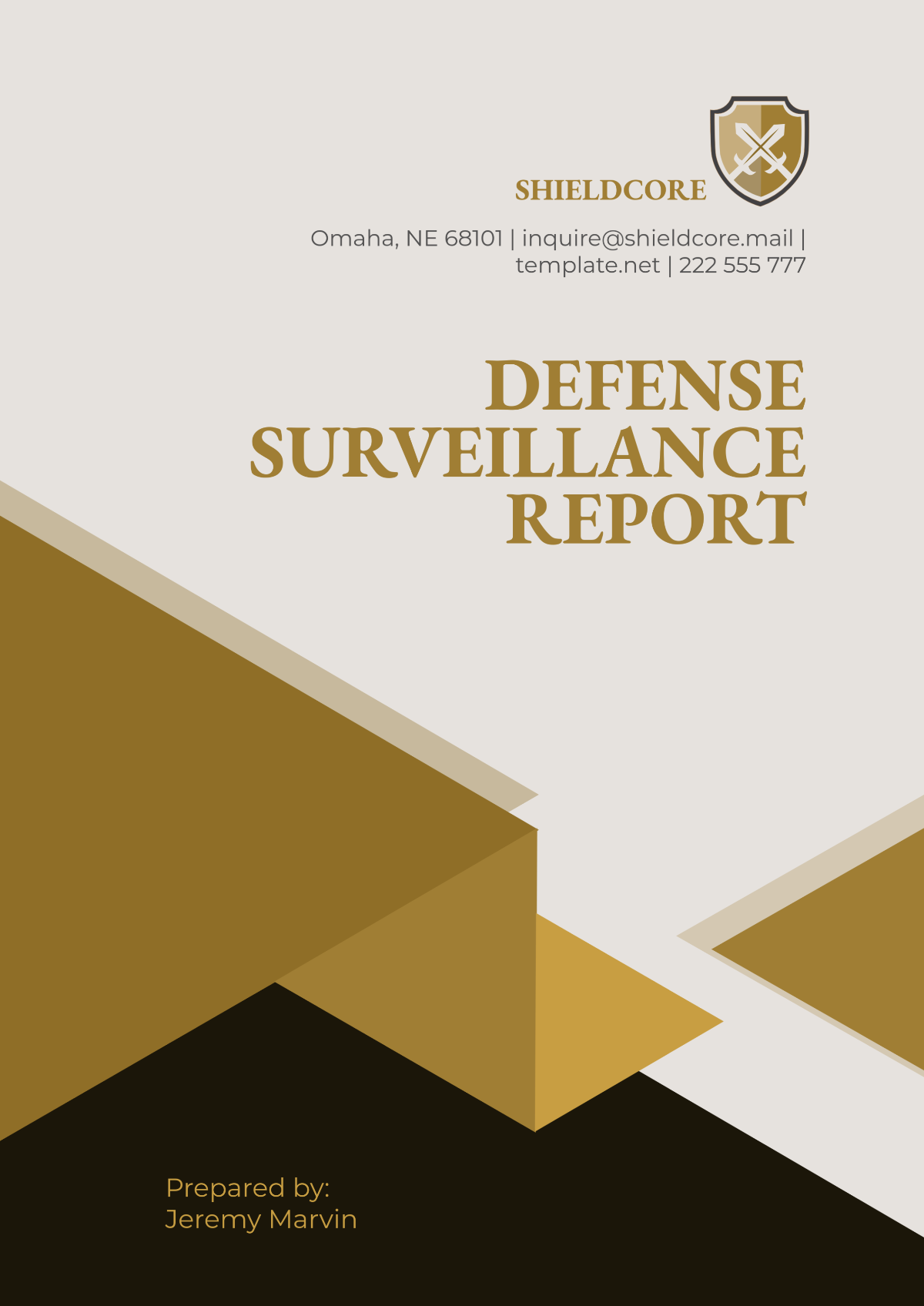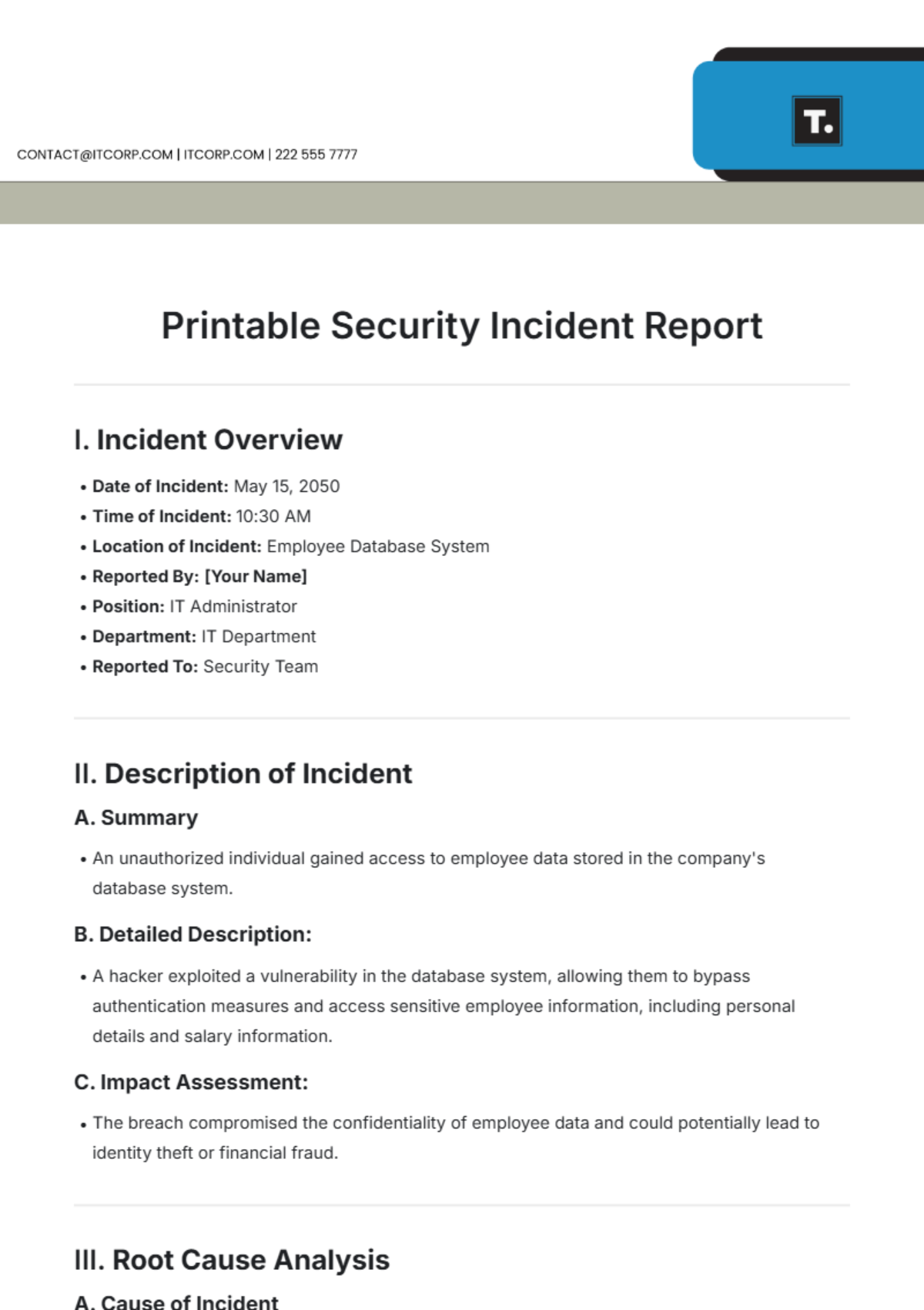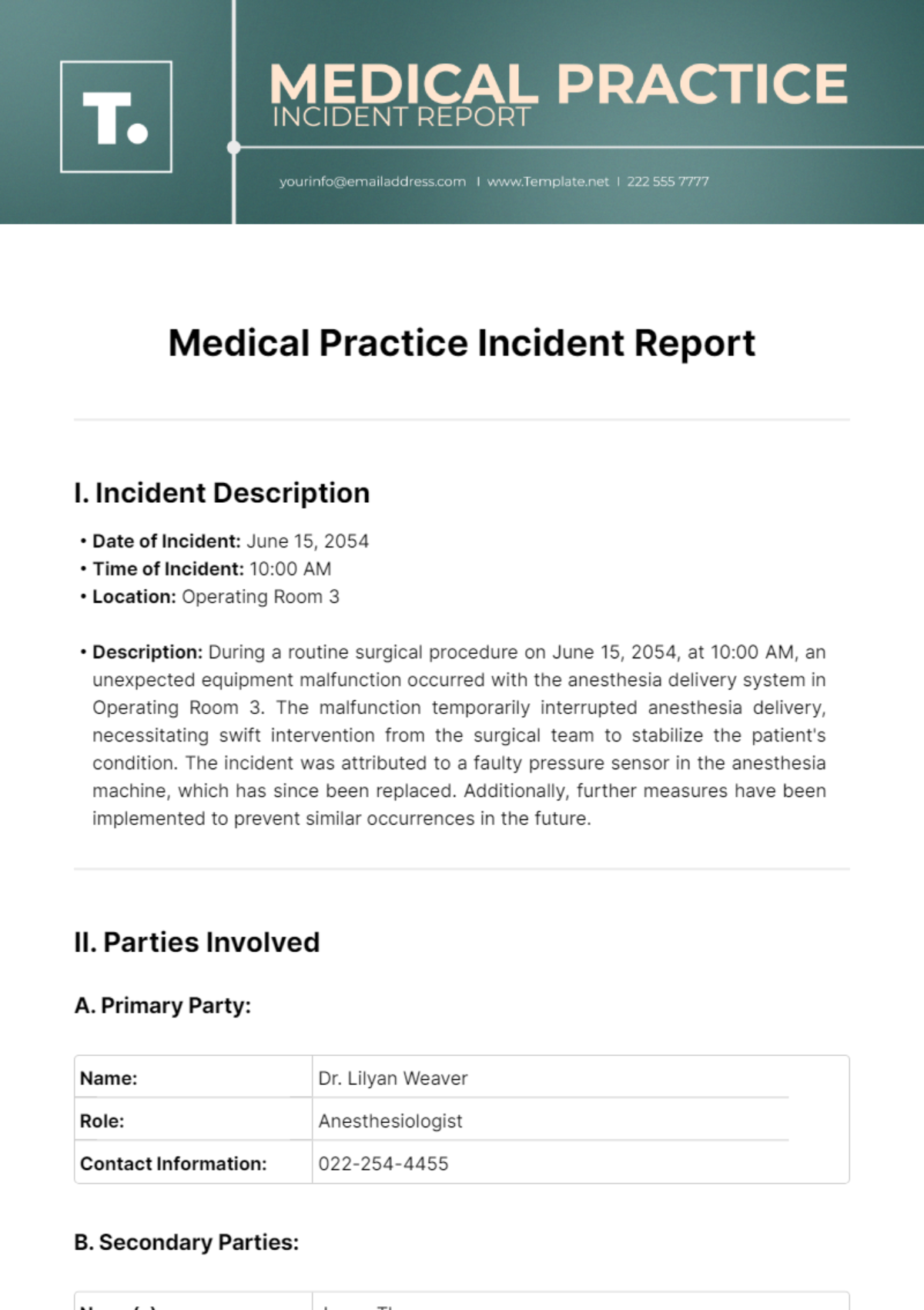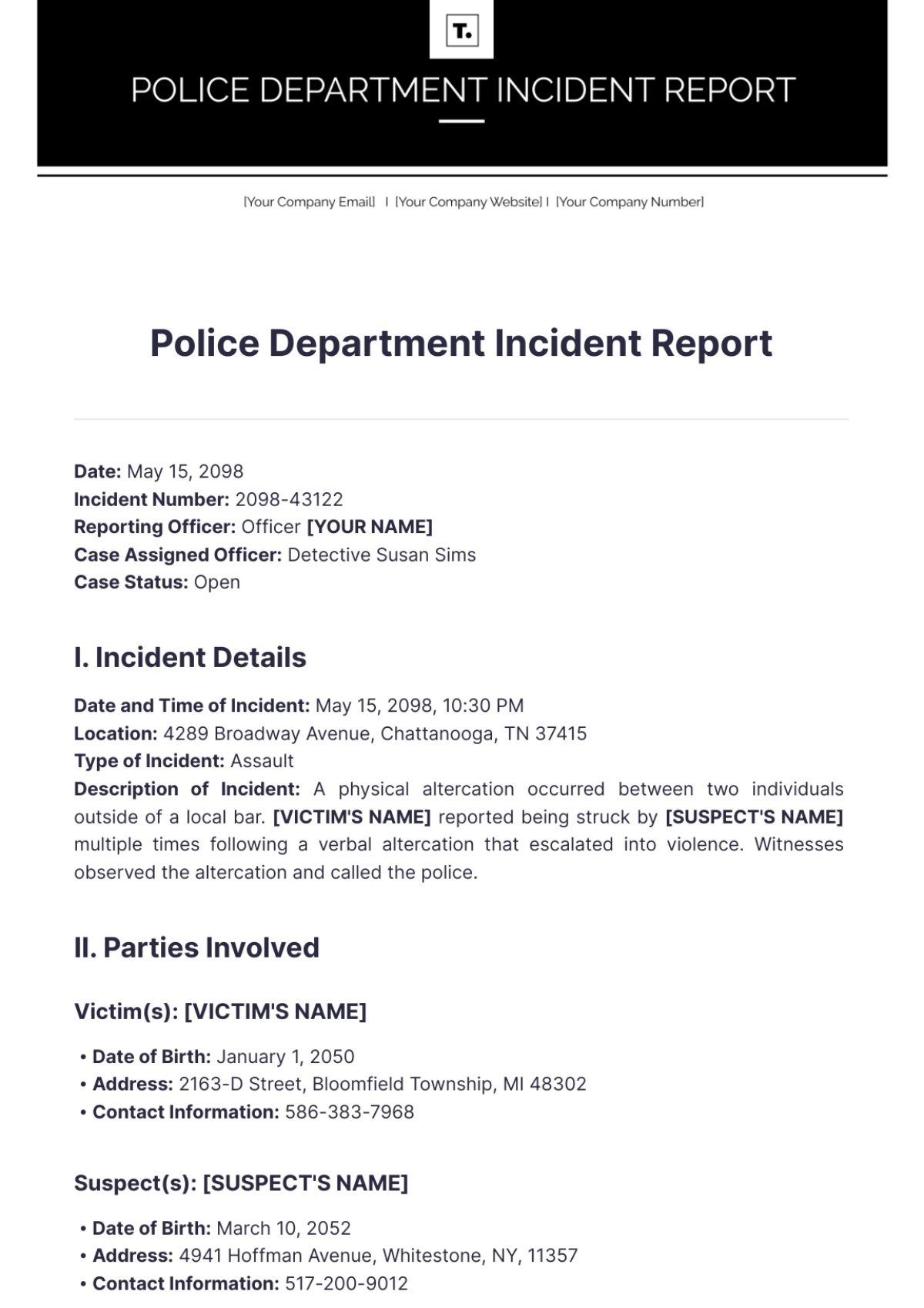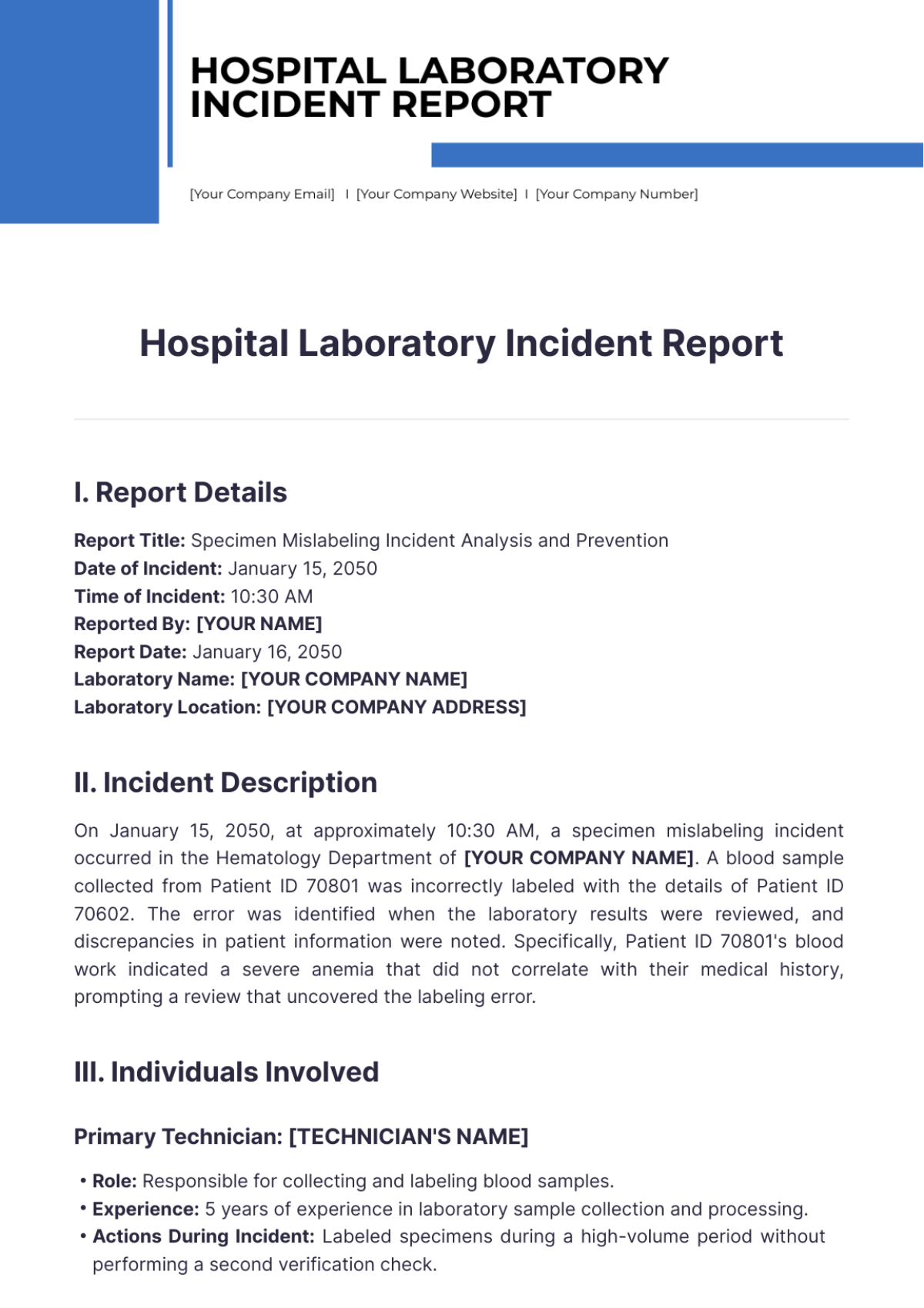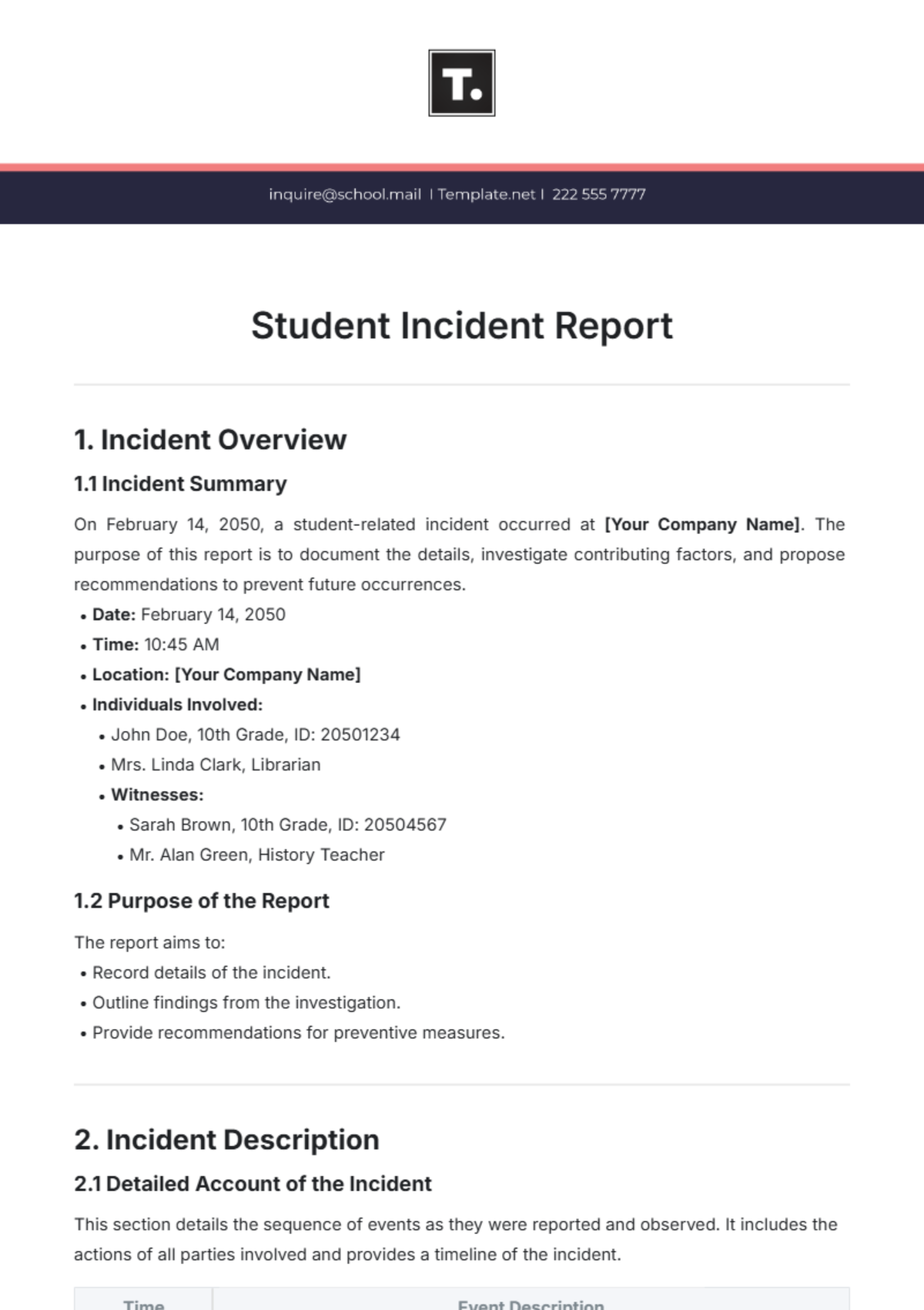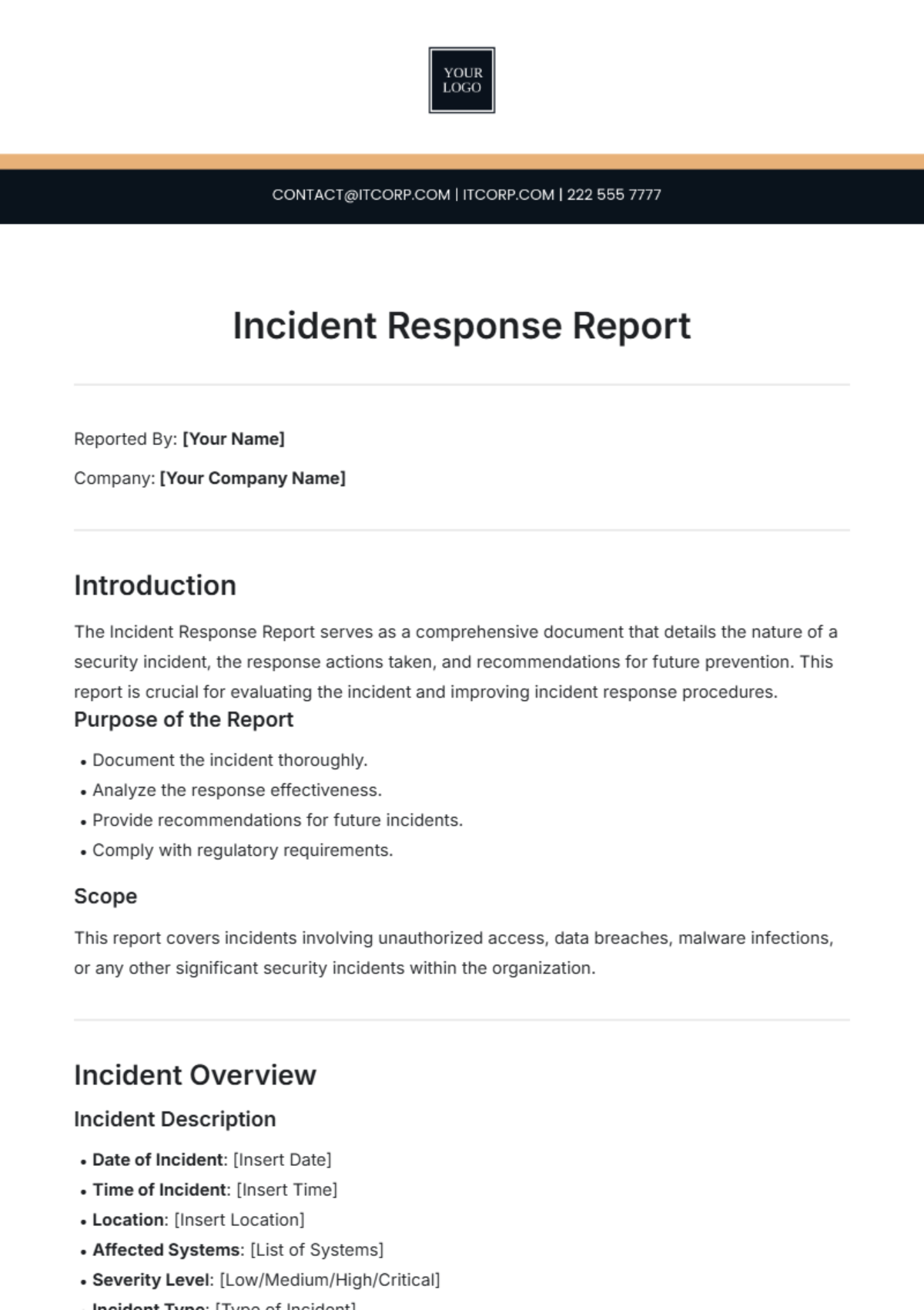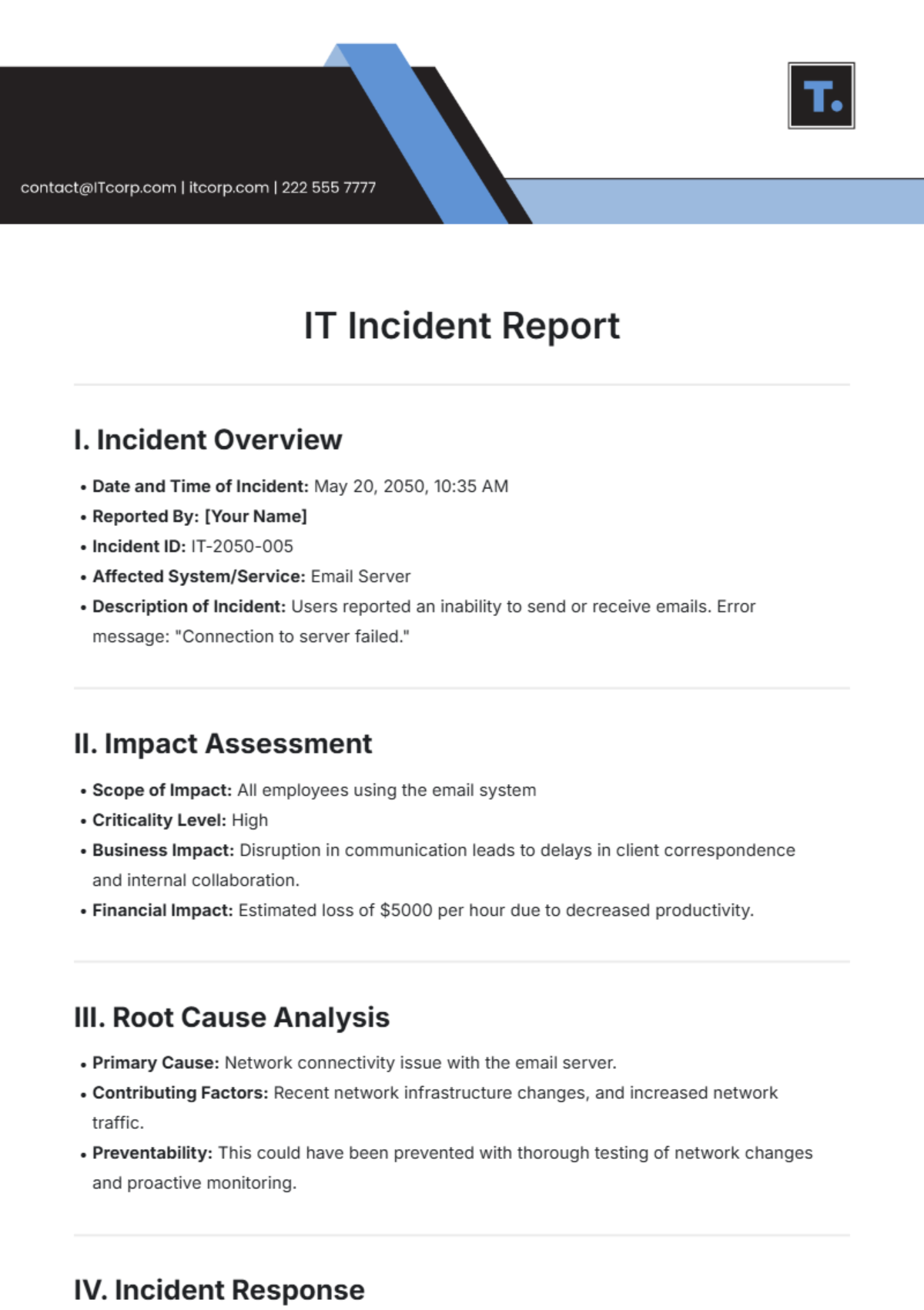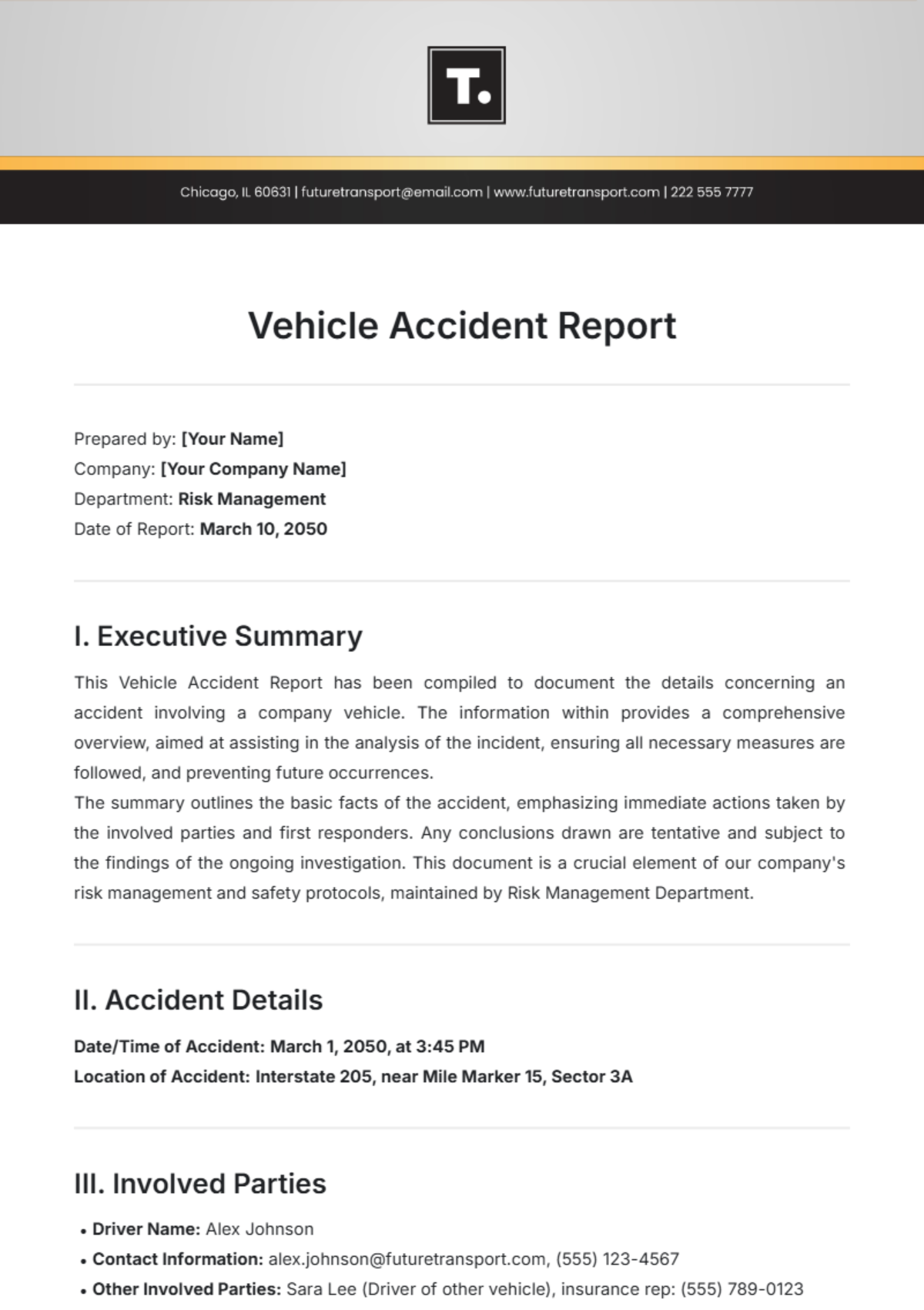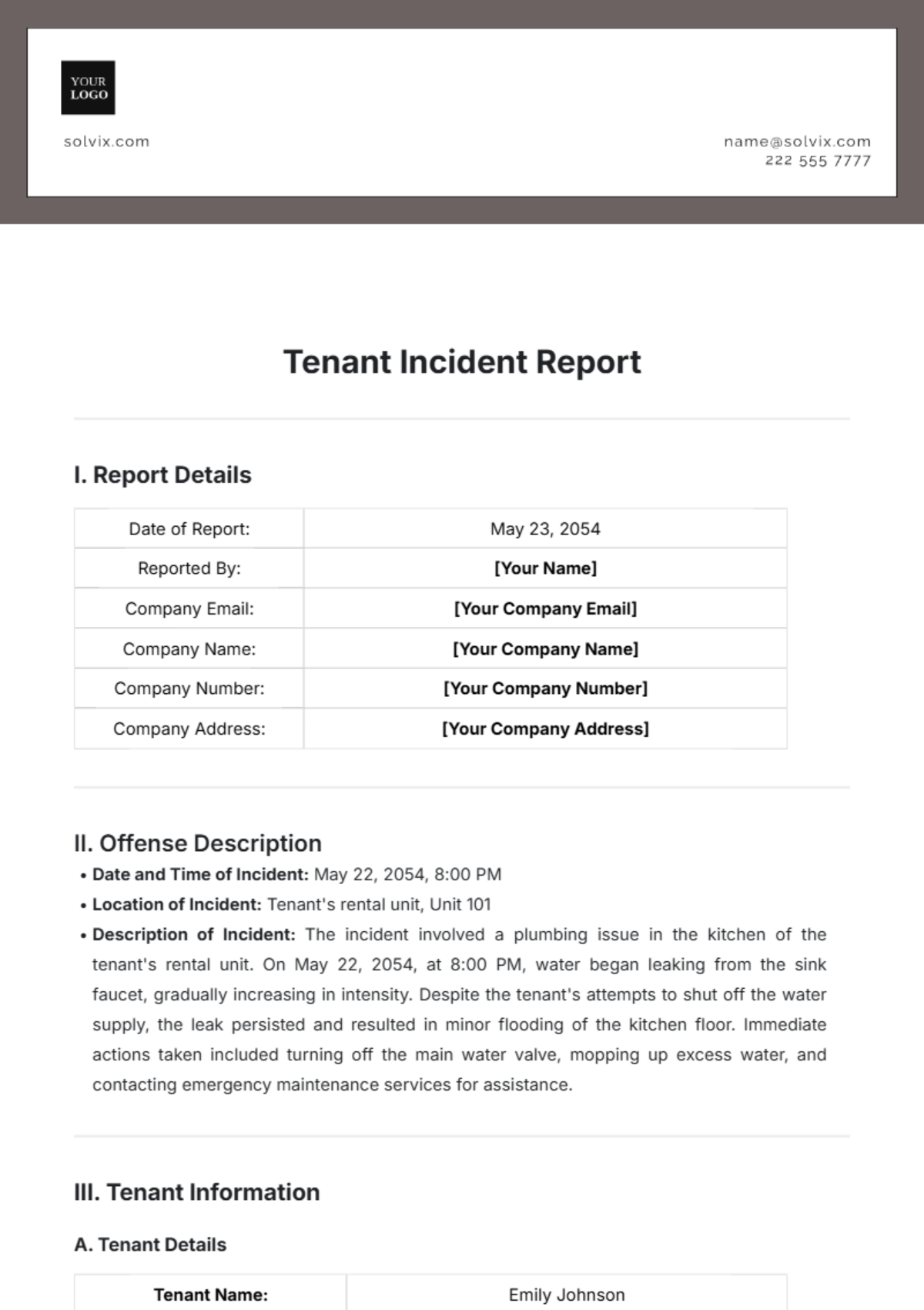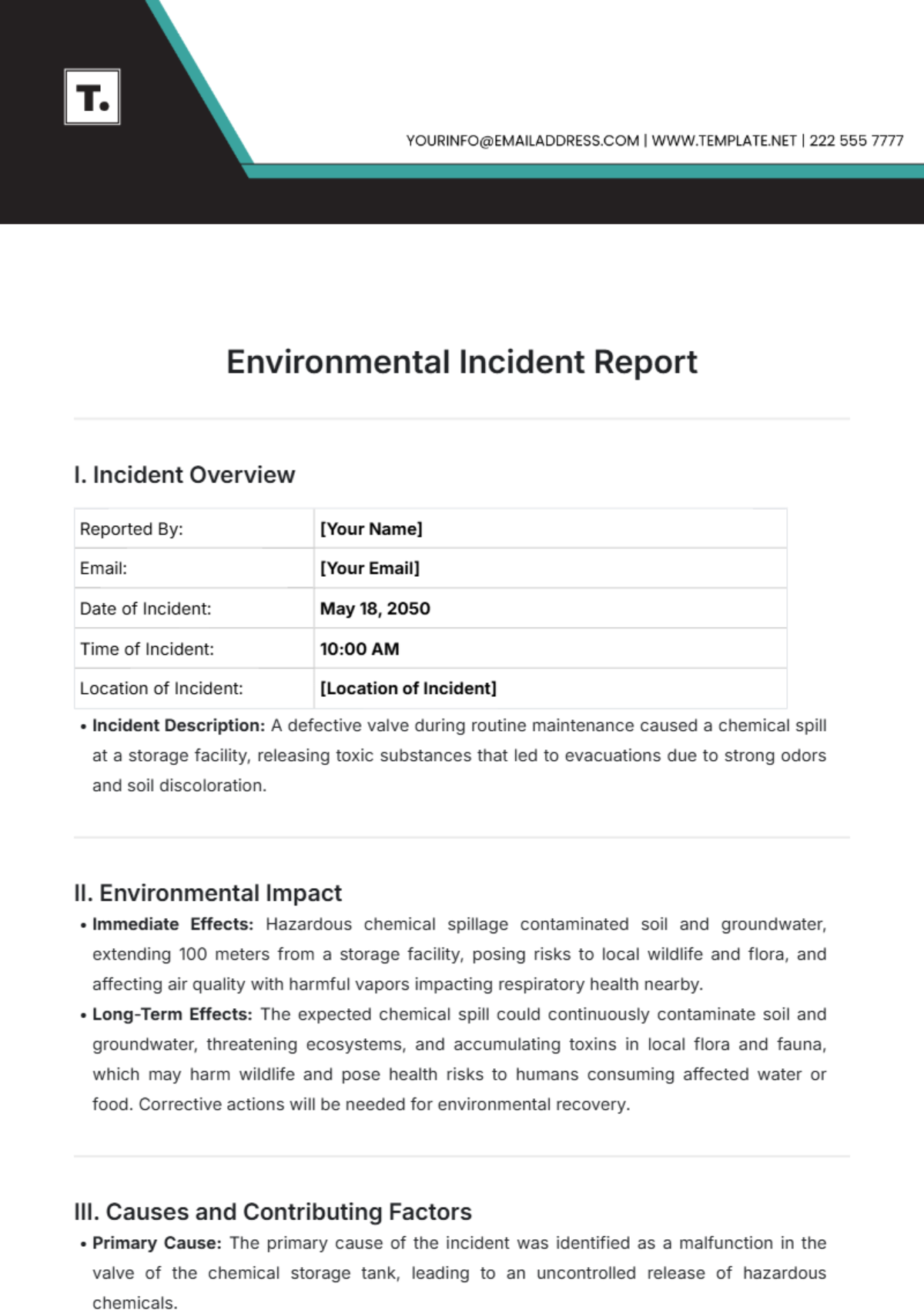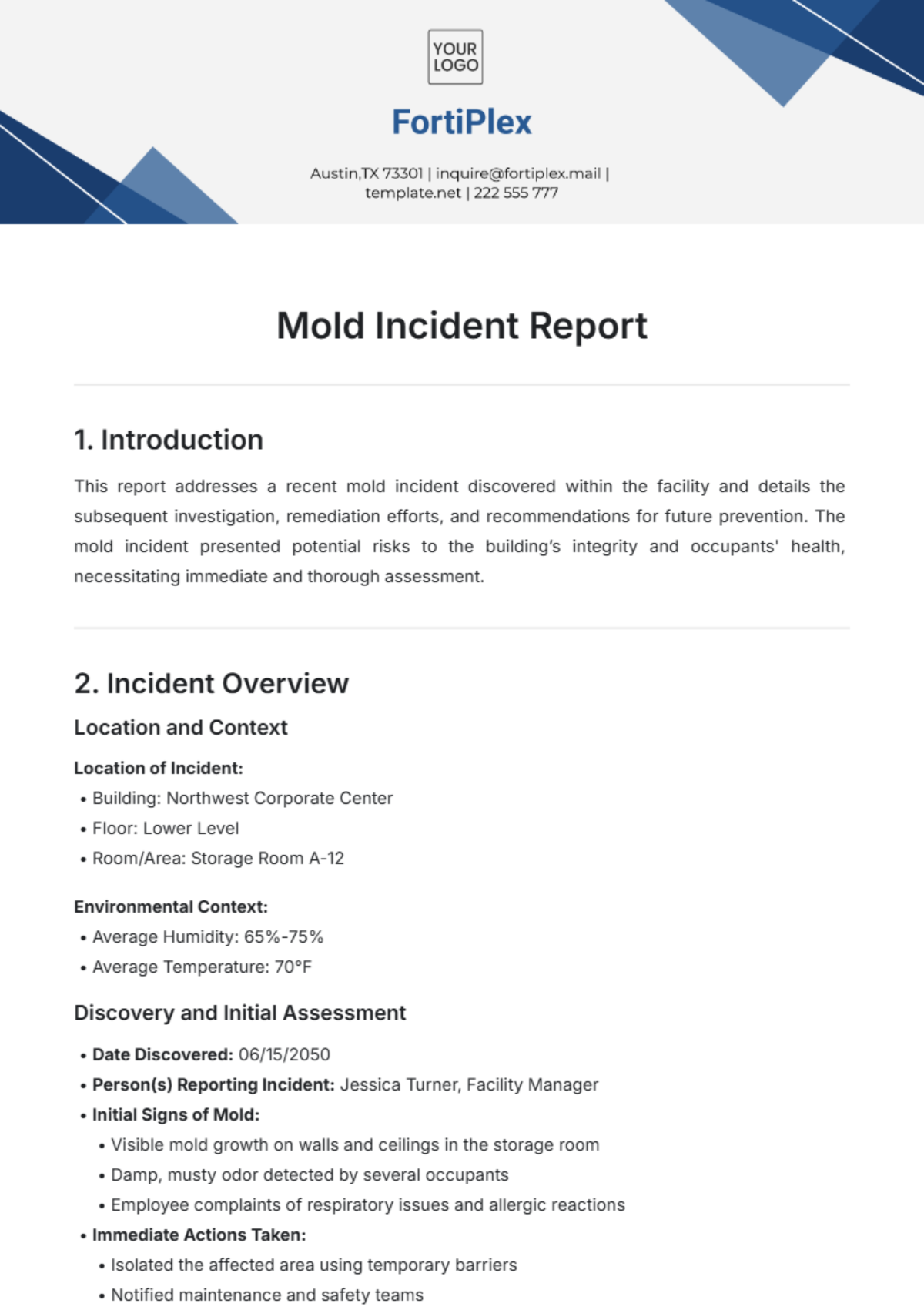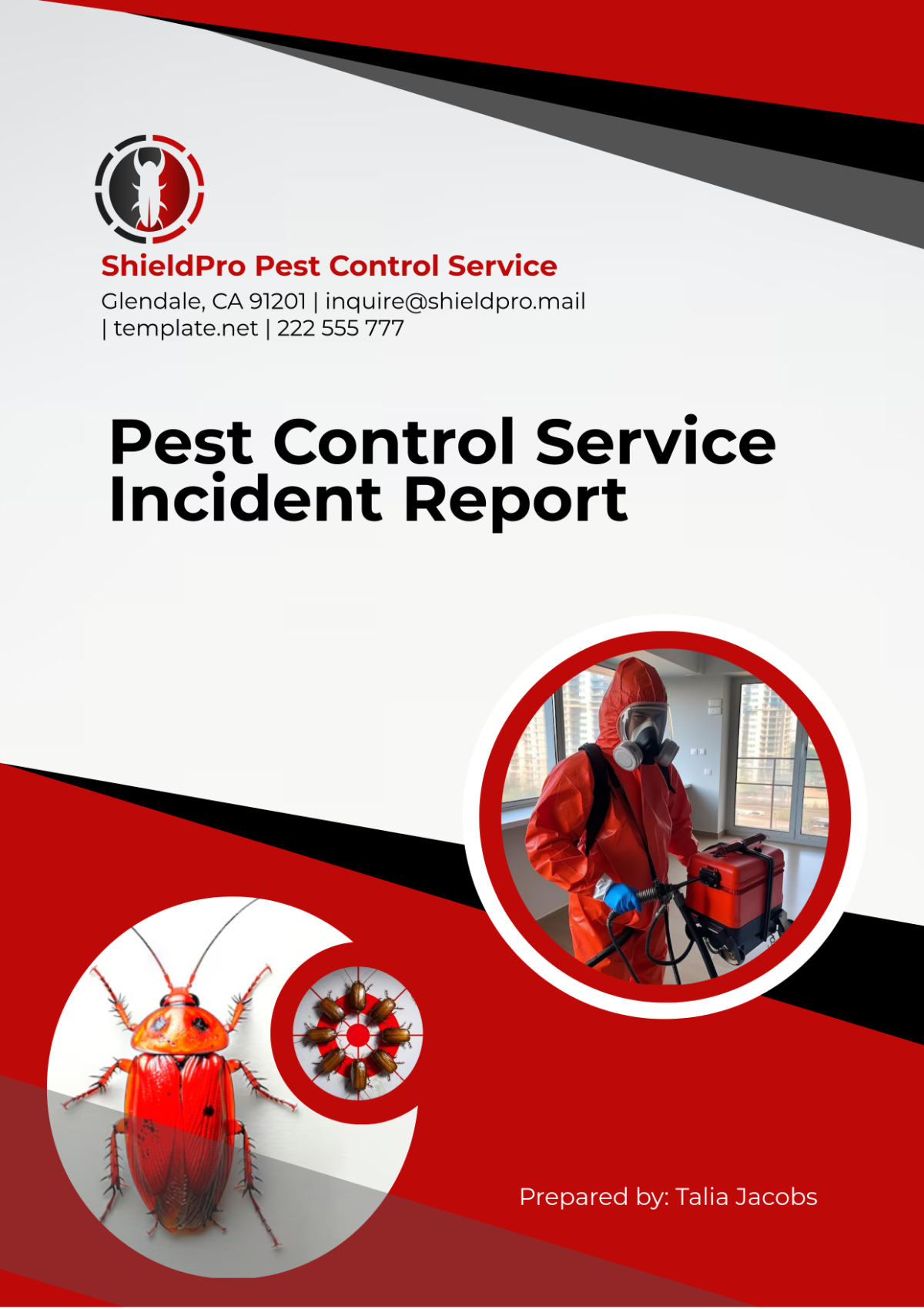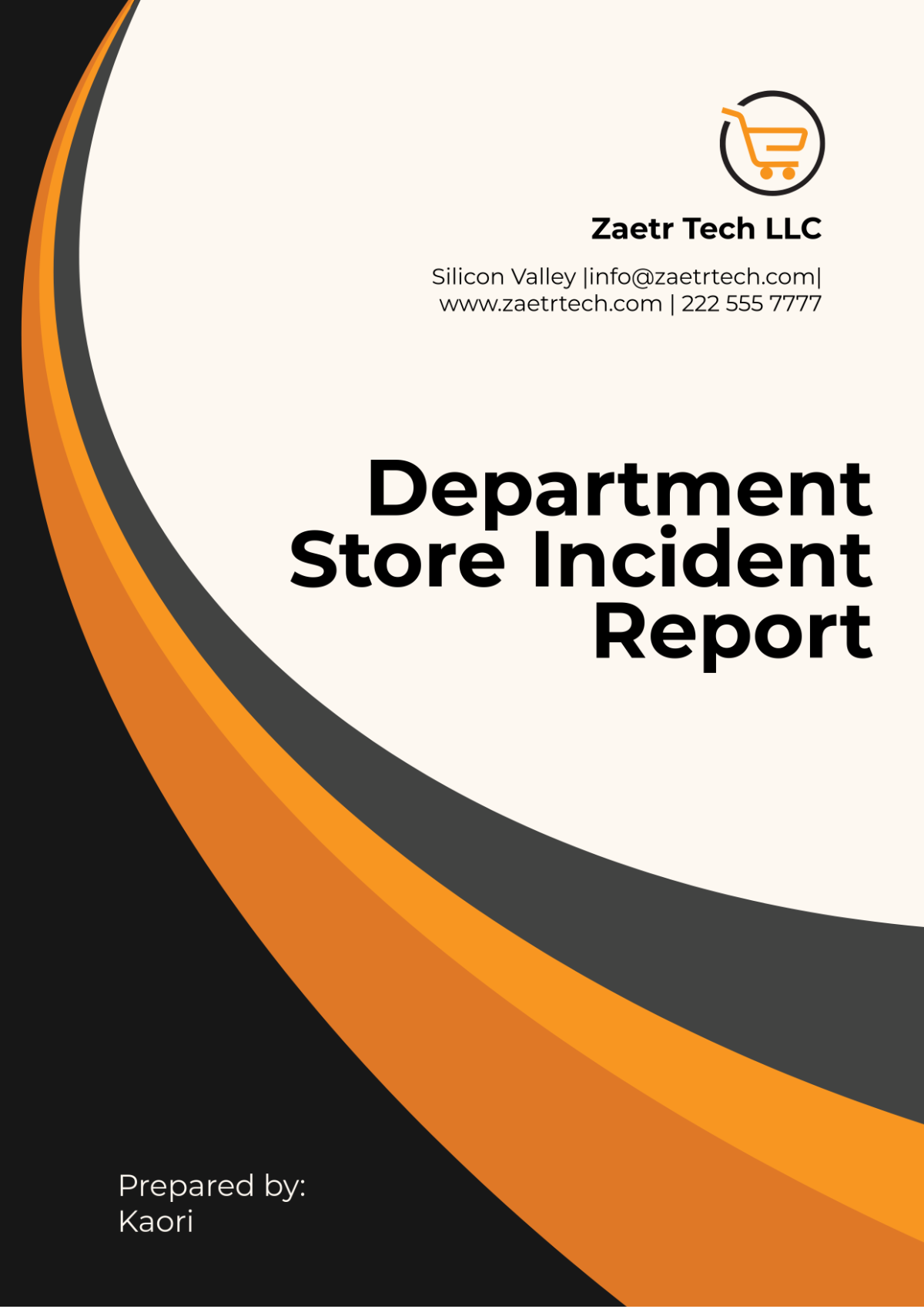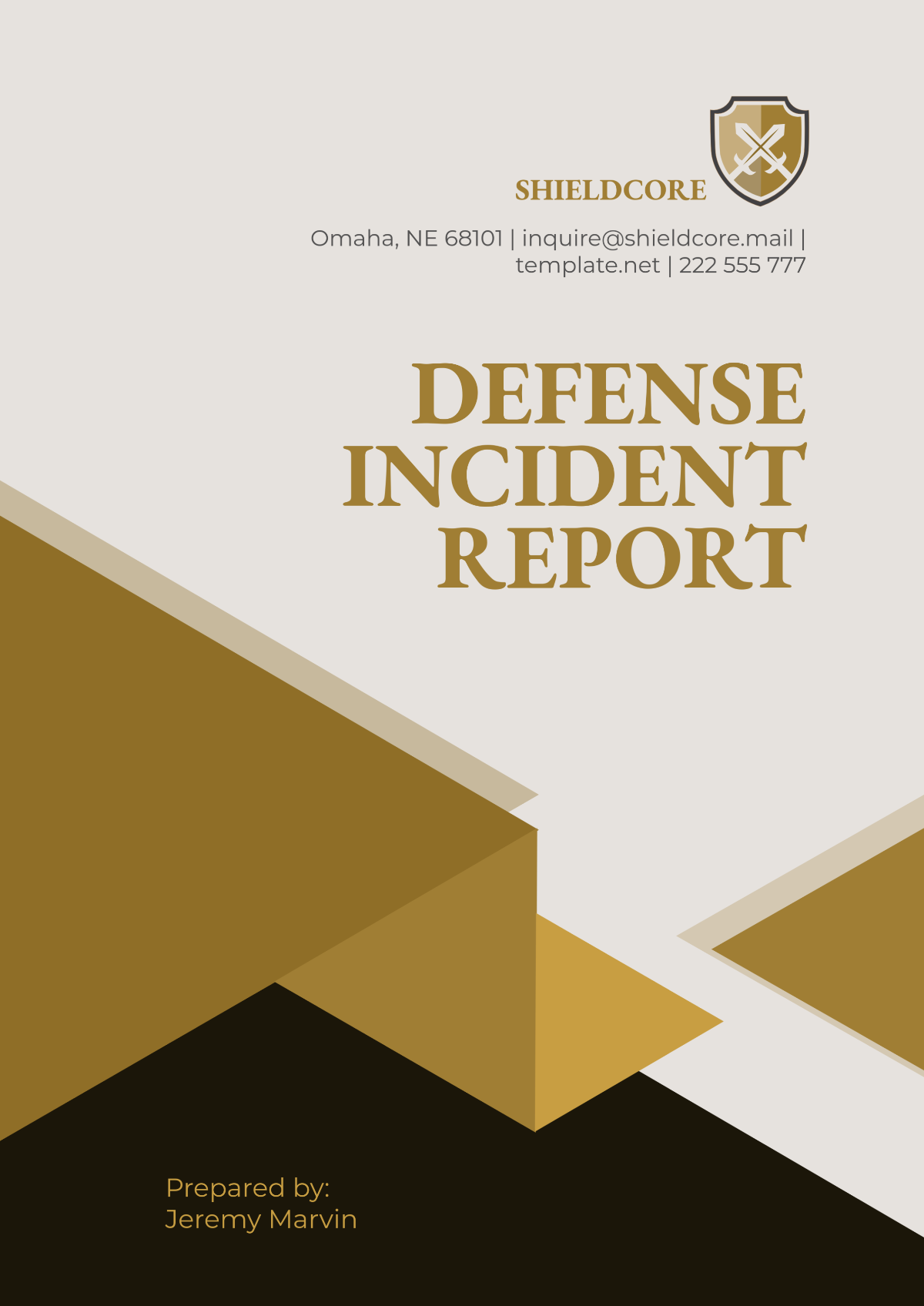Department Store Incident Report
1. Introduction
This incident report serves as a formal document outlining the details and consequences of a theft attempt that occurred at the Downtown branch of [Your Company Name] Department Store on January 14, 2050. The report aims to provide a thorough analysis of the event, evaluate its impact on operations, outline the financial repercussions, and propose recommendations to prevent similar incidents in the future. Such incidents not only threaten the physical safety of our employees and customers but also pose significant risks to our brand reputation and operational integrity. By documenting and analyzing this event, we commit to learning from it and implementing necessary improvements.
2. Incident Details
Information | |
|---|---|
Incident Report Date: | January 15, 2050 |
Incident Location: | [Your Company Name] Department Store, Downtown Branch |
Reported By: | John Doe (Security Supervisor) |
Incident Date: | January 14, 2050 |
Time of Incident: | 5:45 PM |
Store Branch: | Downtown |
Incident Number: | [123456789] |
Department: | Electronics and Home Appliances |
Report Type: | Critical Incident Report |
2.1 Date and Time of Incident
Date: January 14, 2050
Time: Approximately [2:30 PM]
The timing of the incident is significant, occurring during peak shopping hours when foot traffic is at its highest. This raises concerns about how vulnerable both staff and customers can be during busy periods, making it essential to analyze our security measures in high-traffic times.
2.2 Location
Store: [Your Company Name] Department Store
Branch: Downtown Branch
Department: Electronics and Home Appliances
The Electronics department is a high-value area within the store, frequently targeted by shoplifters due to the expensive items available, such as televisions, laptops, and gaming consoles. This geographical context informs our strategies for risk management and resource allocation.
2.3 Description of Incident
At approximately [2:30 PM], a male suspect attempted to steal a high-value television from the Electronics department. The suspect disabled the security tag on a [65-inch] flat-screen TV valued at [$1,299]. The theft was interrupted by a loss prevention officer, leading to a physical altercation that resulted in minor injuries to the officer.
The suspect's actions were premeditated, as he had been observed loitering in the department for a significant period before the incident. Eyewitness accounts suggested that he appeared to be assessing the area, likely waiting for an opportunity to execute his plan.
During the confrontation, the loss prevention officer identified the suspect's intentions and approached him to investigate further. However, the suspect reacted aggressively, pushing the officer to the ground. This escalation necessitated immediate intervention by additional security personnel who were on duty. The suspect was ultimately apprehended by security personnel before he could exit the store.
The incident not only endangered the safety of the employee involved but also created a scene that startled numerous customers in the vicinity.
3. Involved Parties
3.1 Suspect Information
Attribute | Details |
|---|---|
Gender | Male |
Estimated Age | [30-35] years old |
Clothing Description | Dark hoodie, jeans, and a baseball cap. This choice of clothing may have been intended to obscure his identity. |
Height | Approximately [6'1"] |
Weight | Approximately [180 lbs]. This physical description can aid law enforcement in their investigation. |
3.2 Store Employees
Employee Name | Position | Role in Incident |
|---|---|---|
Jane Collins | Loss Prevention Officer | Attempted to stop the suspect, demonstrating courage in a potentially dangerous situation. |
Mark Johnson | Security Personnel | Assisted in detaining the suspect, showcasing the importance of teamwork in crisis scenarios. |
Sarah Lee | Sales Associate | Witnessed the incident, providing critical insights into the events as they unfolded. |
3.3 Customers
Customer Name | Reaction |
|---|---|
Several unnamed customers | Expressed concern and discomfort during the incident. Some left the store early, possibly due to fear for their safety. Customers later provided statements expressing that the incident disrupted their shopping experience and affected their perception of the store’s safety. |
4. Financial Impact
4.1 Direct Costs
The direct costs incurred as a result of the incident include medical expenses for the injured employee and security response costs.
Cost Item | Estimated Amount |
|---|---|
Medical Expenses | [$300]. This amount covers initial treatments for minor injuries sustained by the loss prevention officer during the incident. |
Security Response | [$150]. This includes the cost of additional security measures taken immediately following the incident, such as overtime pay for security personnel. |
Total Direct Costs | [$450]. This figure reflects the immediate financial burden placed on the store due to the incident. |
4.2 Indirect Costs
Indirect costs can stem from lost sales, employee time, and the overall impact on customer experience.
Lost Sales: Estimated at [$1,500] due to reduced foot traffic and customer hesitation during the incident. The presence of security and the commotion likely deterred potential customers from shopping.
Employee Time: Employee time diverted from customer service to manage the incident. Several employees were involved, resulting in a loss of productivity for approximately [45] minutes. This diversion impacts the overall operational efficiency of the store.
4.3 Total Financial Impact
Cost Type | Estimated Amount |
|---|---|
Total Direct Costs | [$450] |
Total Indirect Costs | [$1,500] |
Total Financial Impact | [$1,950] |
The financial repercussions of the incident underscore the importance of addressing security vulnerabilities to prevent future occurrences, which could have even more significant costs associated.
5. Operational Impact
5.1 Security Response
The incident highlighted several operational concerns in the store’s response protocol, including the following points:
Response Time: The security team was alerted immediately, but their response time could be improved. The altercation lasted for approximately [5 minutes], during which time the suspect was able to disable the security tag and attempt to leave the store. This timeframe is critical, as it shows an opportunity for quicker action that could have minimized disruption.
Communication Gaps: There were communication gaps between the sales staff and security personnel. A more streamlined protocol for reporting suspicious activities could help in faster responses in the future.
5.2 Operational Disruption
The incident temporarily disrupted the normal flow of operations at the Downtown branch of [Your Company Name] Department Store. Specifically, the Electronics and Home Appliances department was closed off for [45] minutes while the police conducted their investigation and the security team reviewed store footage.
Operational Issues
Issue | Impact |
|---|---|
Decreased foot traffic in affected areas | Closure of the Electronics department reduced customer access, leading to potential lost sales. This was particularly detrimental during a busy shopping season, where customer engagement is crucial. |
Delayed transactions | Customers faced delays in processing purchases, leading to frustration and possible loss of business. The long wait times for assistance might have pushed some customers to seek alternatives at competing stores. |
5.3 Customer Experience Impact
Customer experience is a vital element of [Your Company Name]’s brand reputation, and this incident had a noticeable effect on the shoppers present at the time.
Perception of Safety: The visibility of the incident may have created a perception of the store being unsafe. Customers reported feeling uneasy after witnessing a store employee injured. Such experiences can lead to negative word-of-mouth, which is detrimental to our brand.
Customer Service Interruptions: Staff availability was limited during the incident, resulting in long wait times for assistance, frustrating customers and detracting from their shopping experience. Many customers reported feeling neglected as they sought help in other areas of the store.
To mitigate the negative impact on customer perception, store management communicated with shoppers through in-store announcements, apologized for the inconvenience caused, and provided discount coupons to affected customers. Such actions were designed to rebuild trust and encourage return visits.
6. Root Cause Analysis
6.1 Security Vulnerabilities
The incident revealed several potential vulnerabilities in the store’s security systems:
Inadequate Security Tagging System: The suspect was able to disable the security tag on the television too easily. This suggests that our current tagging systems may need to be updated or reinforced to prevent such tampering.
Insufficient Surveillance Coverage: Areas within the Electronics department lacked comprehensive camera coverage. Our current system of monitoring may miss crucial actions taken by potential thieves. By conducting a thorough assessment of camera placements, we can ensure full coverage of all high-risk areas.
6.2 Employee Safety
The safety of our employees is paramount, and this incident highlighted several areas where improvements are necessary:
Lack of Emergency Protocols: While there are basic emergency protocols in place, they were not effectively communicated to all employees. Ensuring all staff members understand their roles during emergencies can prevent confusion and enhance response times.
Training Deficiencies: Employees are not consistently trained on how to handle theft or potentially dangerous situations. Implementing comprehensive training programs will ensure that all staff are prepared to handle various scenarios with confidence and clarity.
7. Witness Statements
Witness accounts play a crucial role in understanding the dynamics of the incident. The following statements were gathered from employees and customers who were present during the event:
7.1 Employee Accounts
Jane Collins (Loss Prevention Officer): "I noticed the suspect acting suspiciously for several minutes before approaching him. I felt a mix of urgency and concern for other customers' safety. When I confronted him, he became aggressive, and I knew I needed to act quickly."
Mark Johnson (Security Personnel): "I heard Jane’s call for backup and rushed to assist. It was alarming to see how quickly the situation escalated. I believe if we had clearer communication protocols, we could have prevented the altercation from becoming physical."
7.2 Customer Accounts
Mrs. Anne Thompson (Customer): "I was shopping with my kids when I saw the man push the employee. It was shocking to see someone get hurt over something as trivial as a TV. I left the store feeling anxious, and it will take time for me to return."
Mr. John Doe (Customer): "The whole scene was chaotic, and while I appreciate the staff’s efforts to control the situation, I couldn't help but feel concerned for my safety. I would have preferred to have a clearer explanation of what was happening."
8. Remedial Actions and Recommendations
8.1 Immediate Actions Taken
In response to the incident, several immediate actions were implemented to address the situation and enhance safety protocols:
Increased Security Presence: The store implemented a temporary increase in security personnel during peak hours, especially in high-risk departments. This measure aims to deter potential thefts and provide immediate assistance in case of emergencies.
Incident Debriefing: A debriefing session was held with all employees following the incident to discuss what occurred, evaluate response protocols, and gather feedback on how to improve security measures. Open dialogue is crucial for learning and growing from such experiences.
8.2 Recommended Future Actions
To ensure a safer shopping environment for both customers and employees, the following actions are recommended:
8.2.1 Security Enhancements
Advanced Security Systems: Invest in more advanced security tag systems that are harder to tamper with, and ensure regular testing of the alarms. This upgrade will provide an added layer of protection against theft attempts.
Increased Surveillance: Add more cameras in critical areas, particularly around high-value items, to improve monitoring. Comprehensive surveillance can deter theft and provide crucial evidence in case of future incidents.
8.2.2 Employee Training
Regular Safety Drills: Conduct safety drills to prepare employees for handling theft situations and emergencies, ensuring all staff understand their roles and responsibilities. These drills should cover various scenarios to enhance preparedness and confidence.
De-escalation Training: Provide all employees with training on how to de-escalate potentially aggressive situations, reducing the need for physical confrontation. Techniques learned in such training can empower staff to handle situations effectively and calmly.
Customer Interaction Training: Develop training modules focused on customer service during emergencies to ensure employees can reassure and assist customers effectively, enhancing their experience even during crises.
9. Conclusion
The incident on January 14, 2050, served as a critical reminder of the importance of security and employee safety in our department stores. The comprehensive analysis conducted in this report highlights the vulnerabilities present in our current systems and underscores the need for enhanced training and security measures. Immediate and long-term strategies are proposed to ensure the safety of our employees and customers, as well as the financial health of the store.
The commitment to learning from this incident will strengthen our store’s operational integrity and enhance the overall shopping experience for our customers. By investing in both technology and training, we aim to foster a safe environment where customers feel welcome and employees can perform their duties without fear of harm. Through continuous improvement and vigilance, [Your Company Name] is dedicated to maintaining the highest standards of safety and security.
